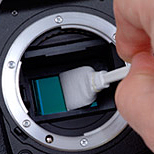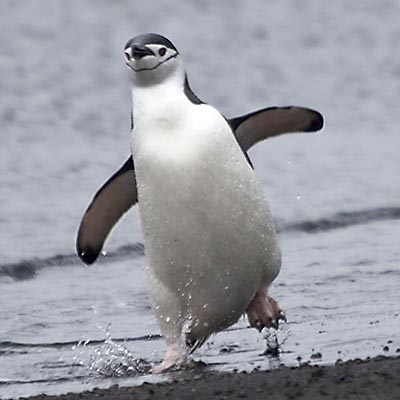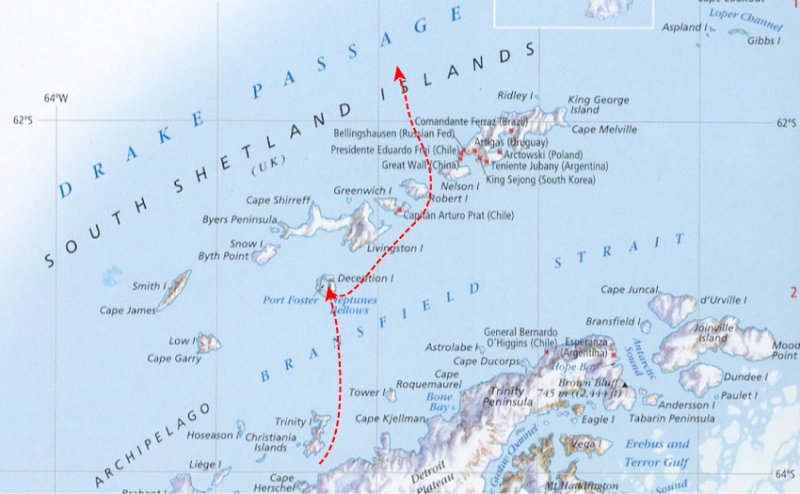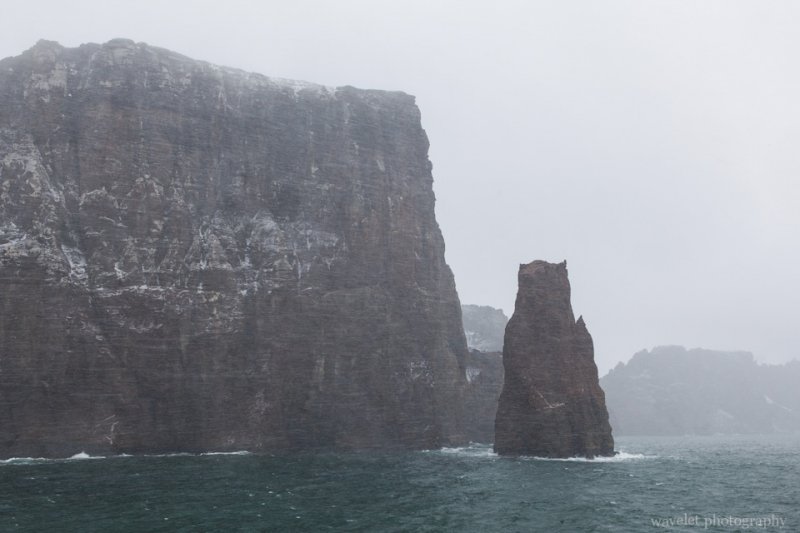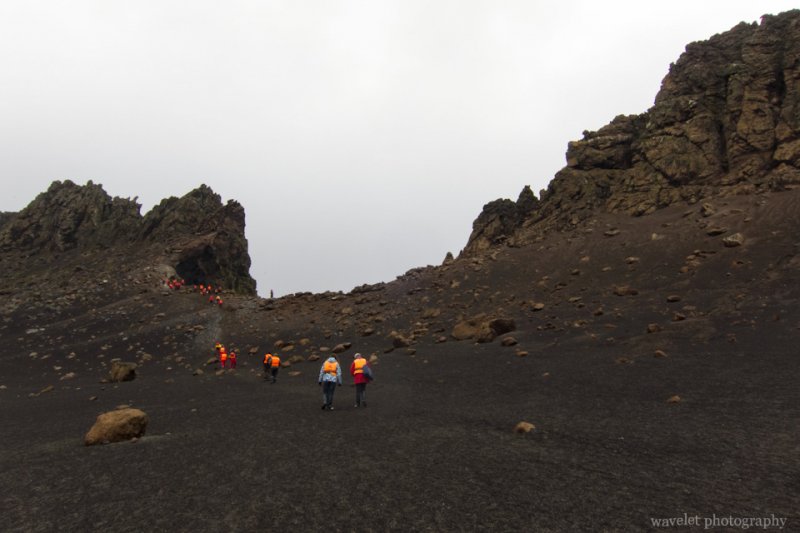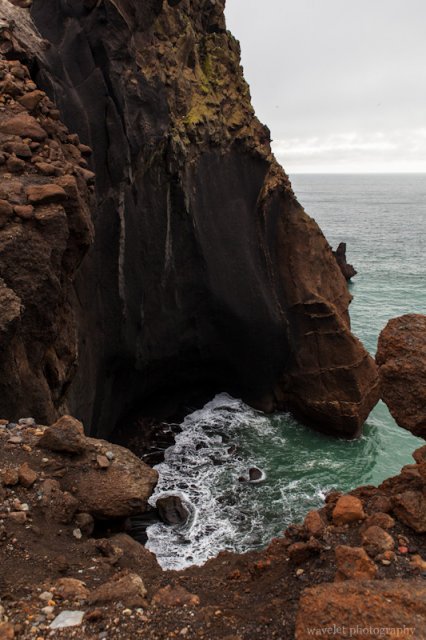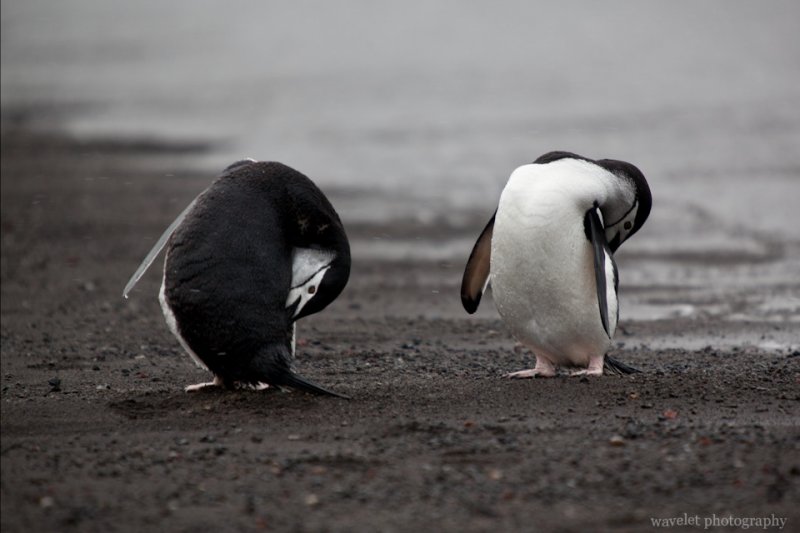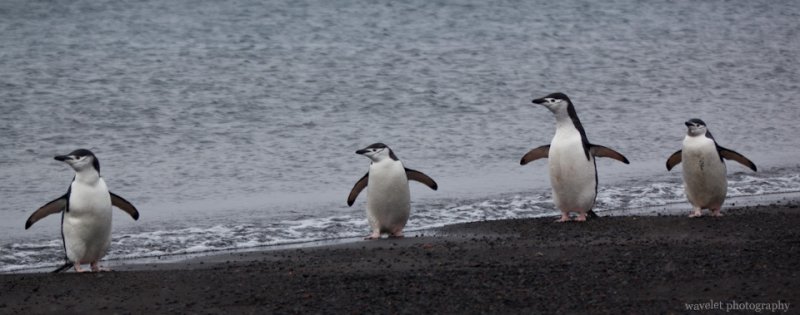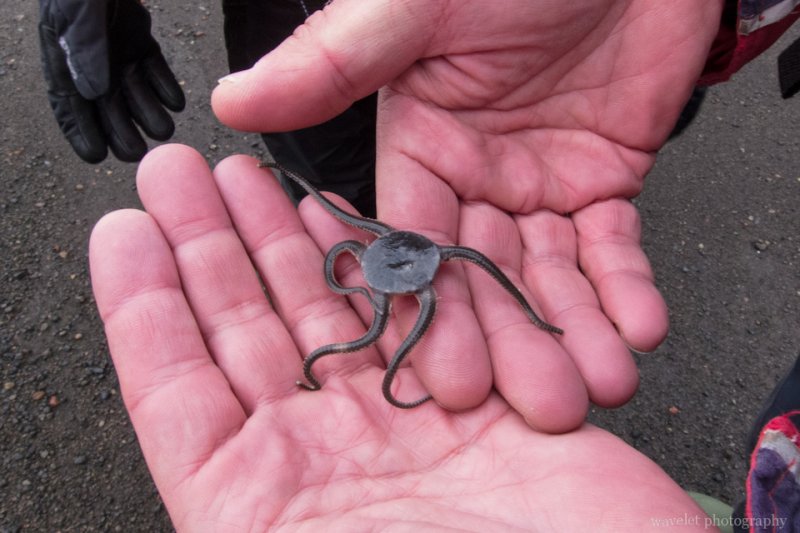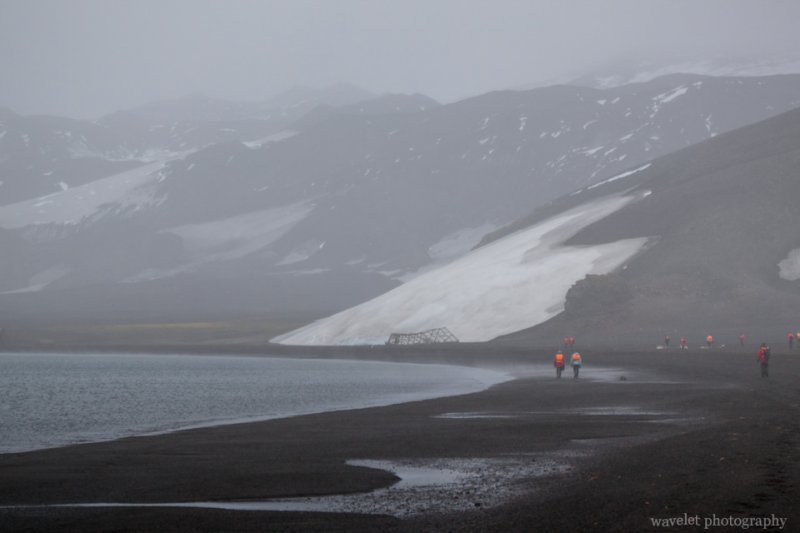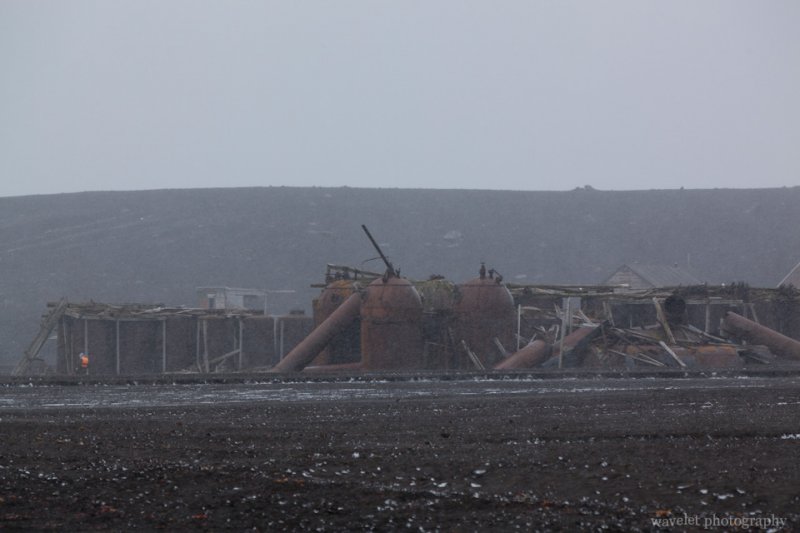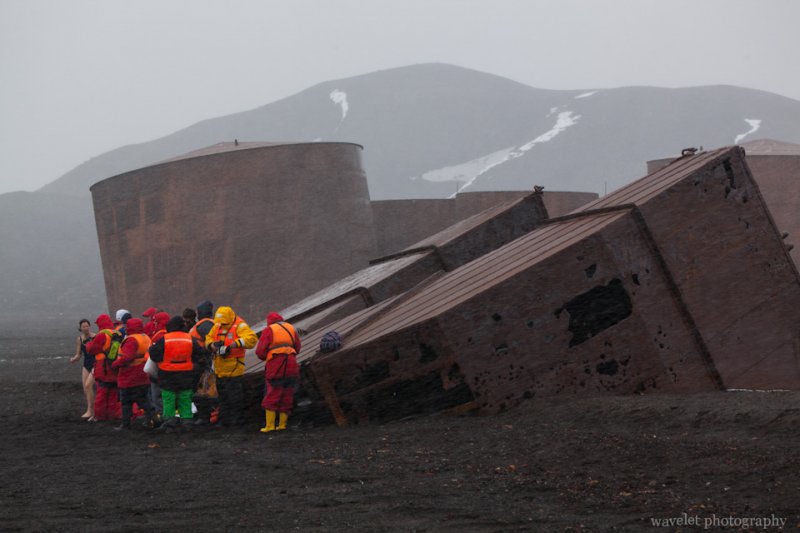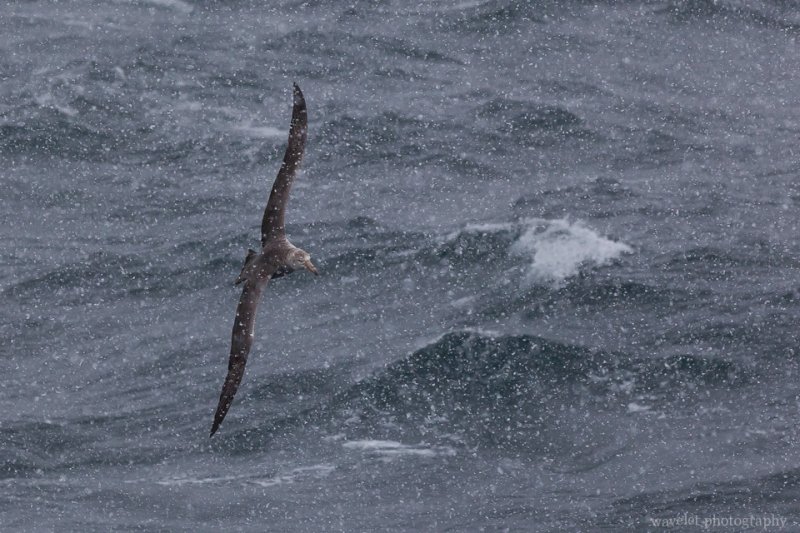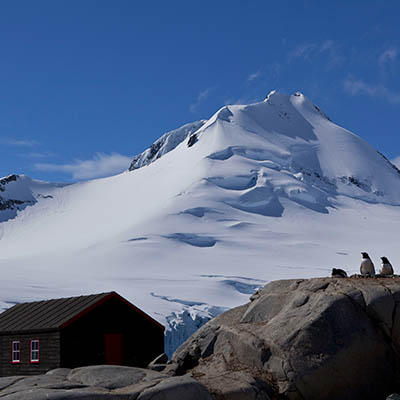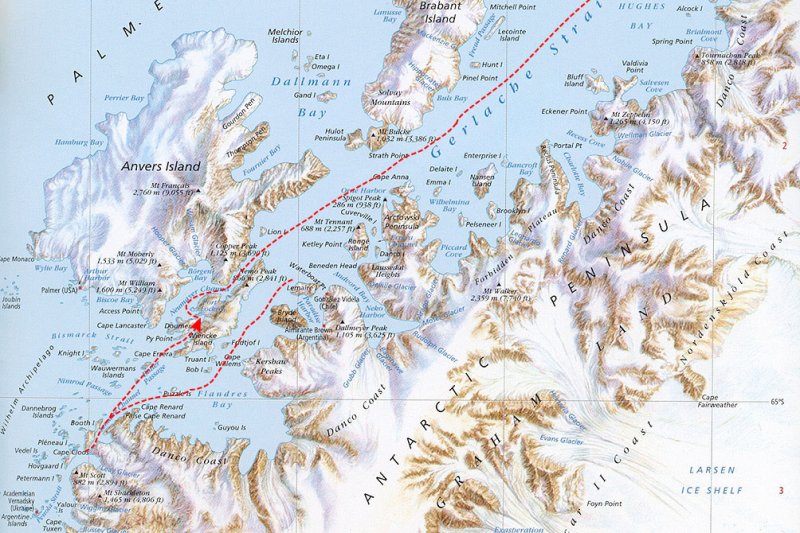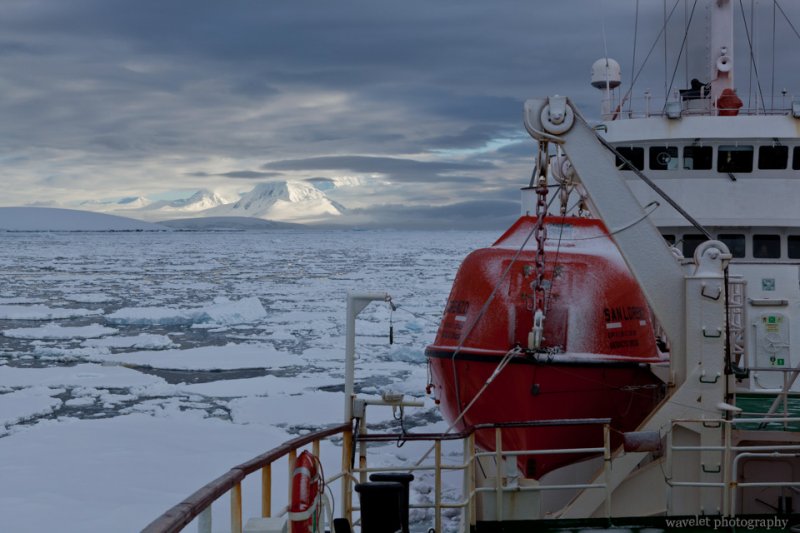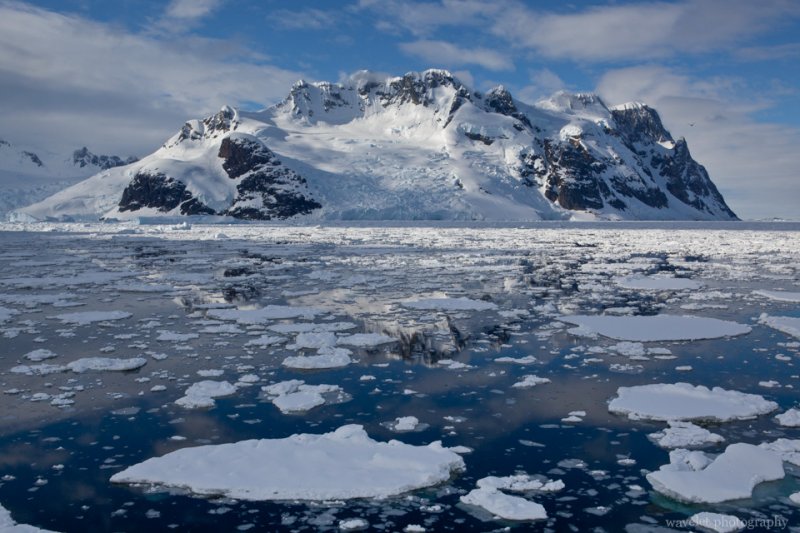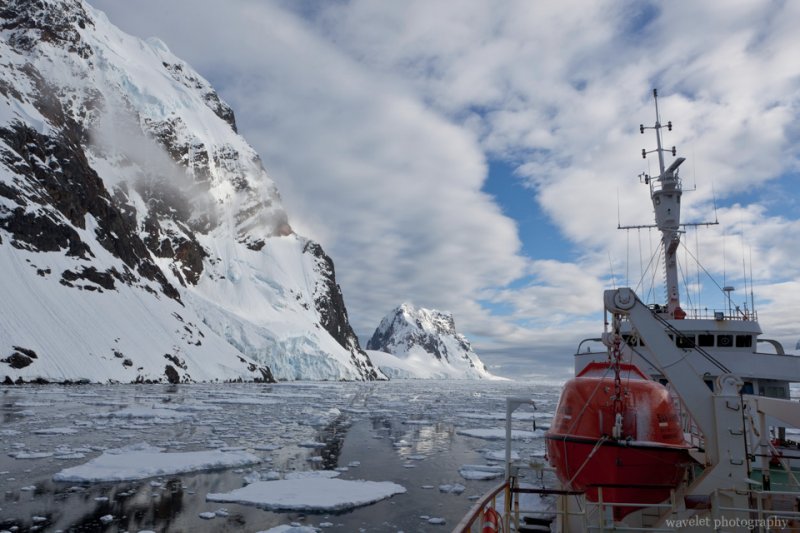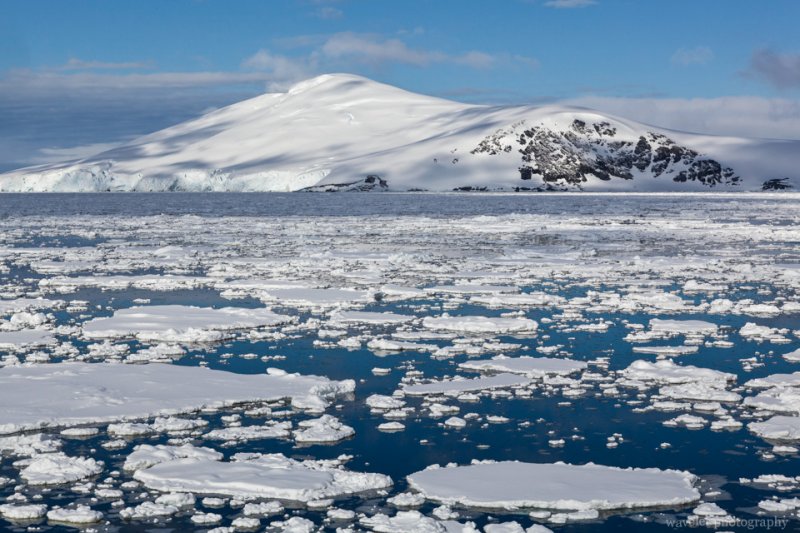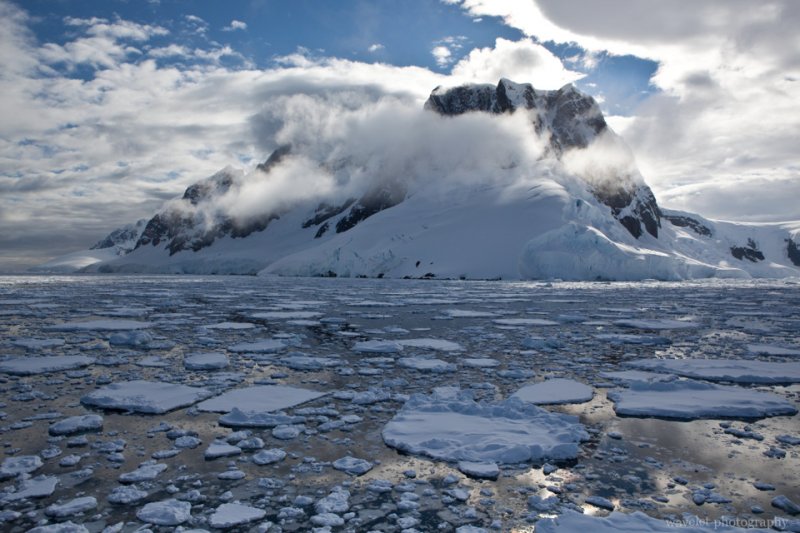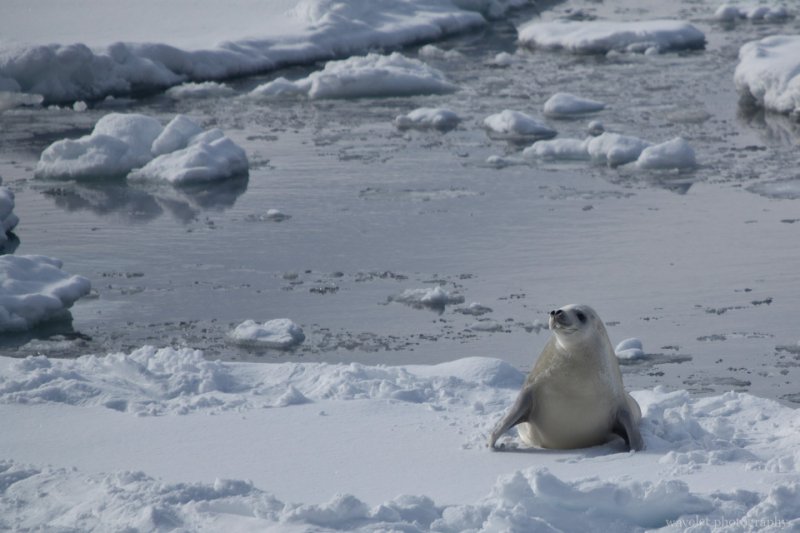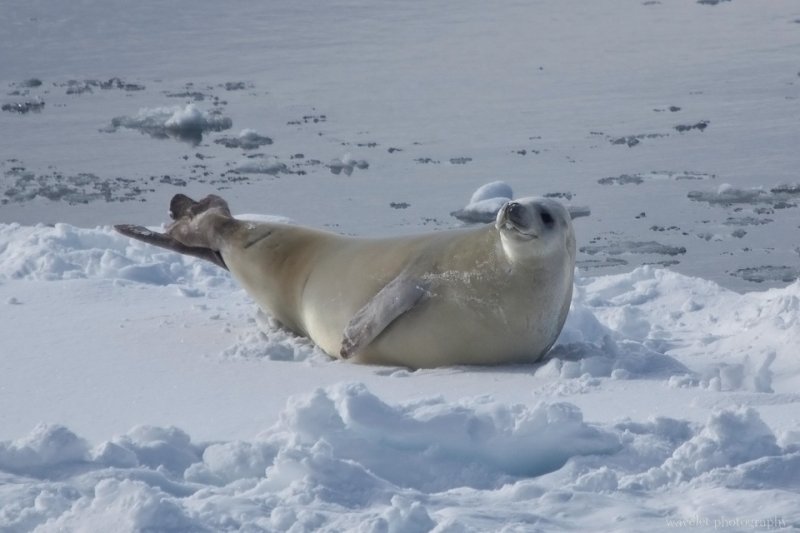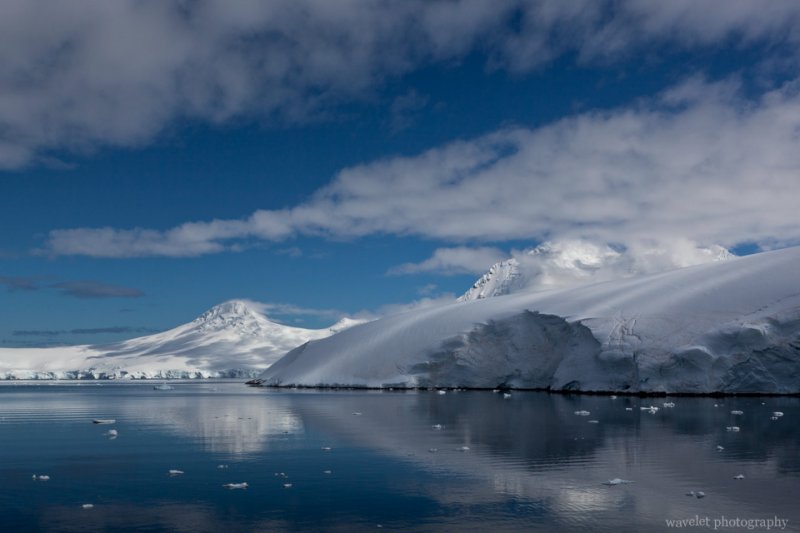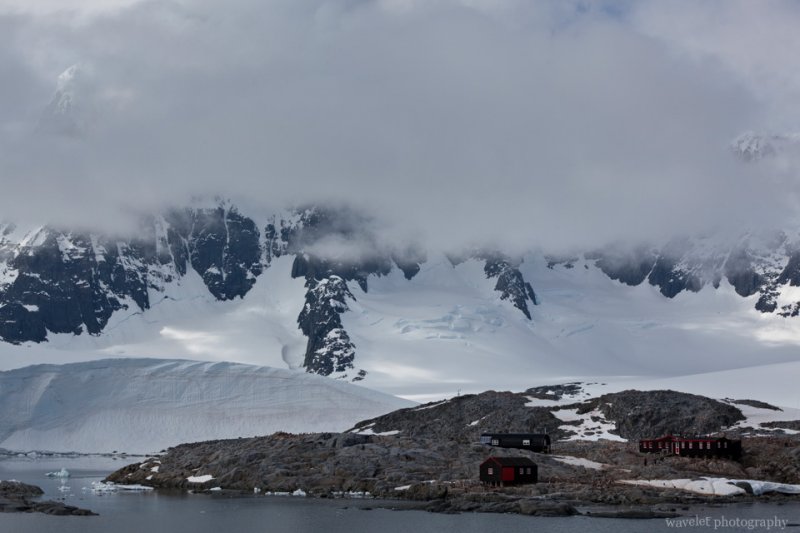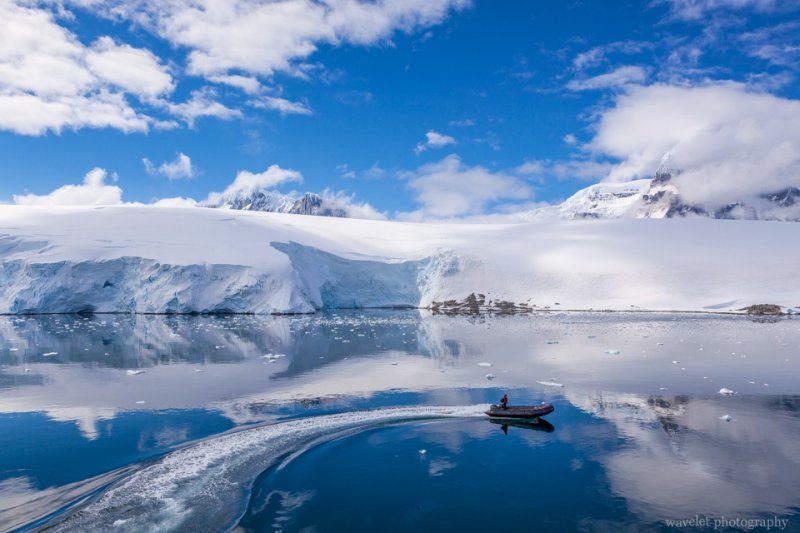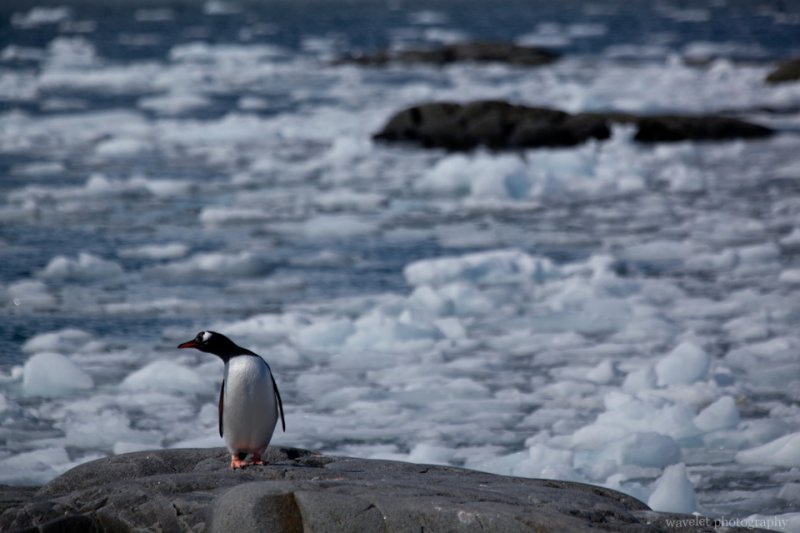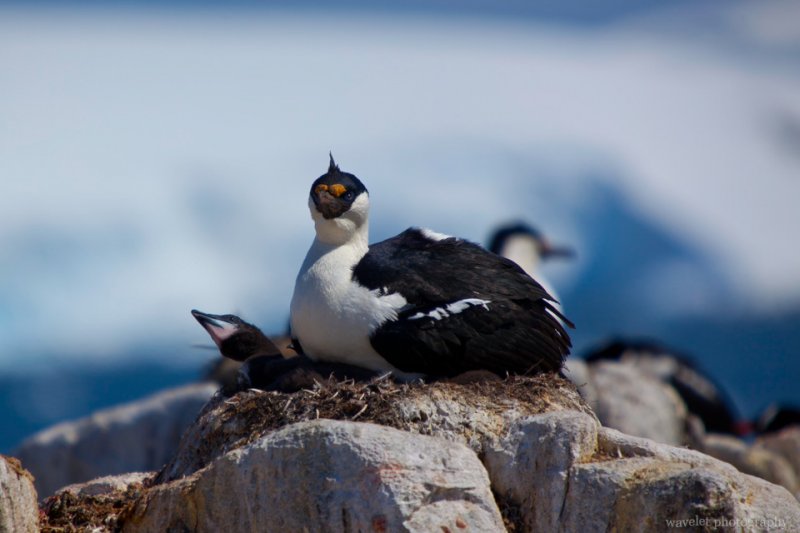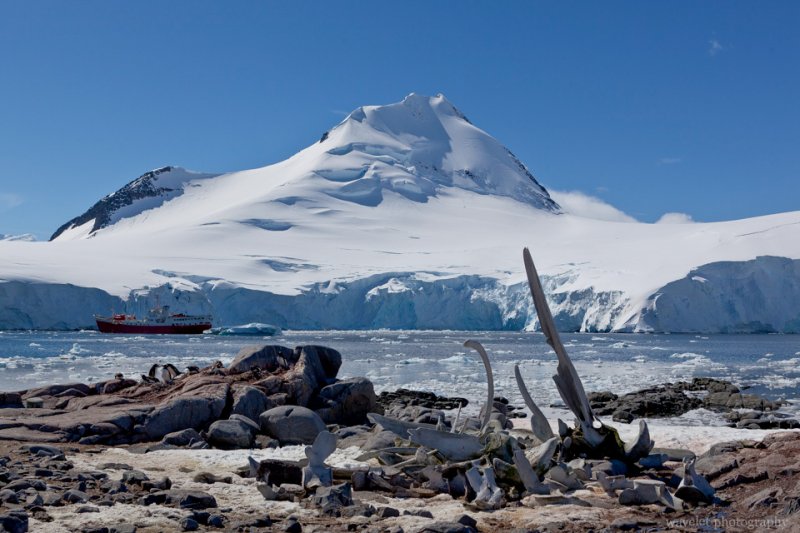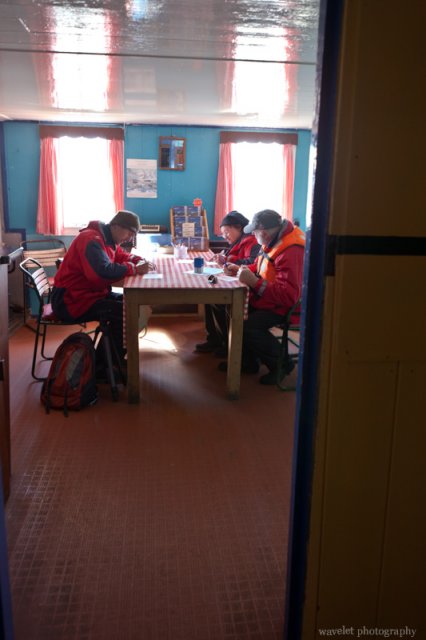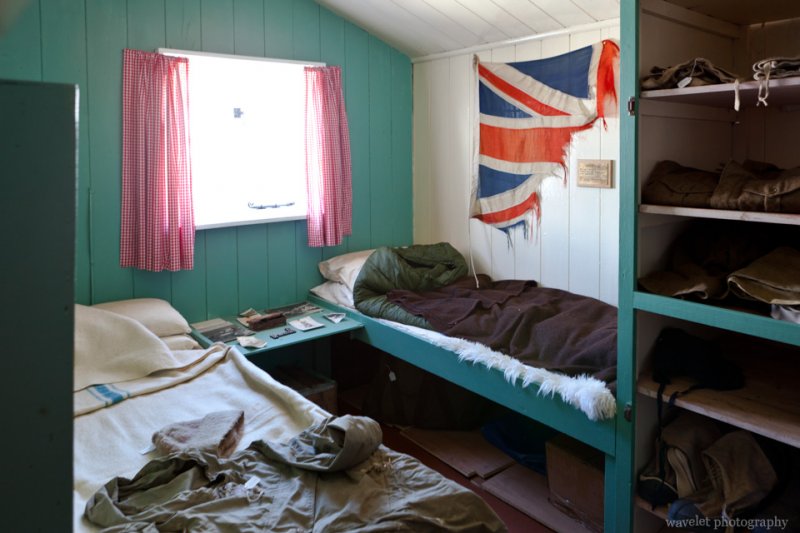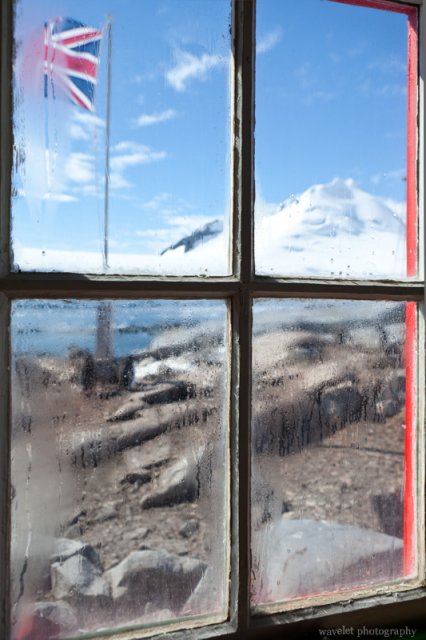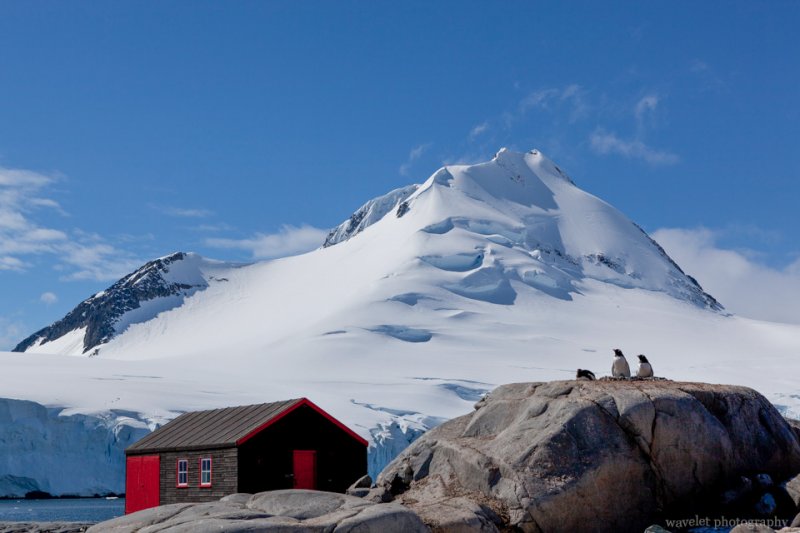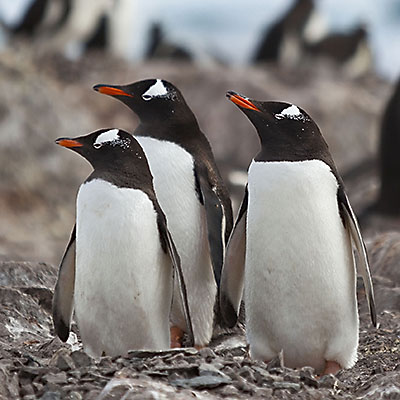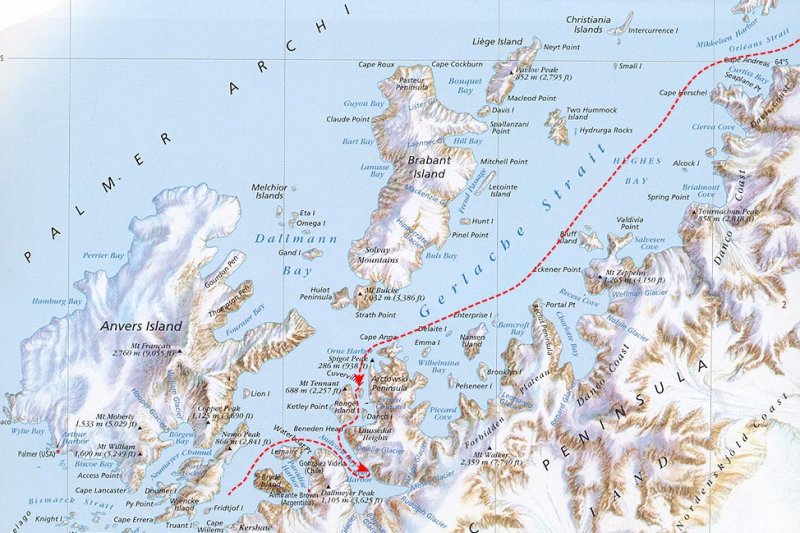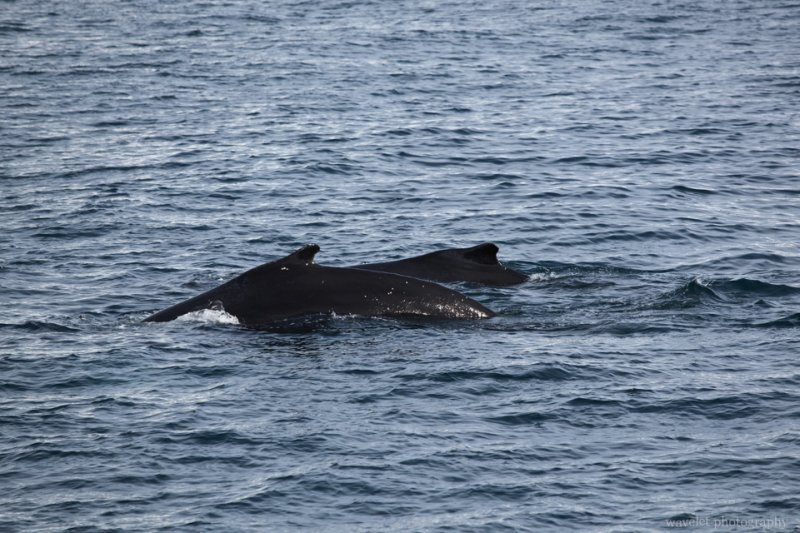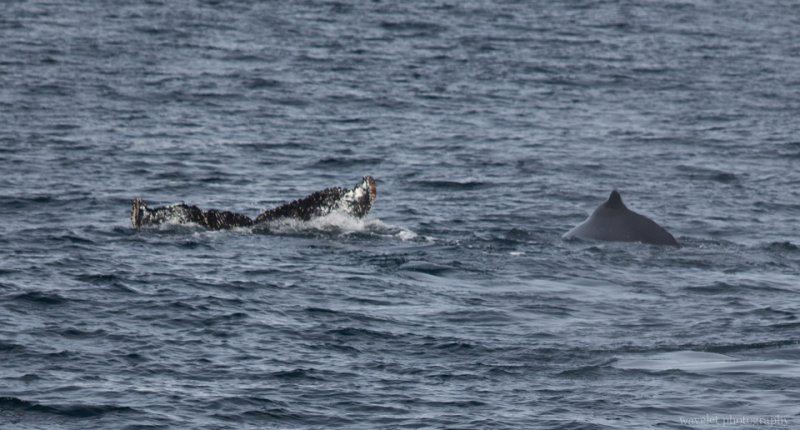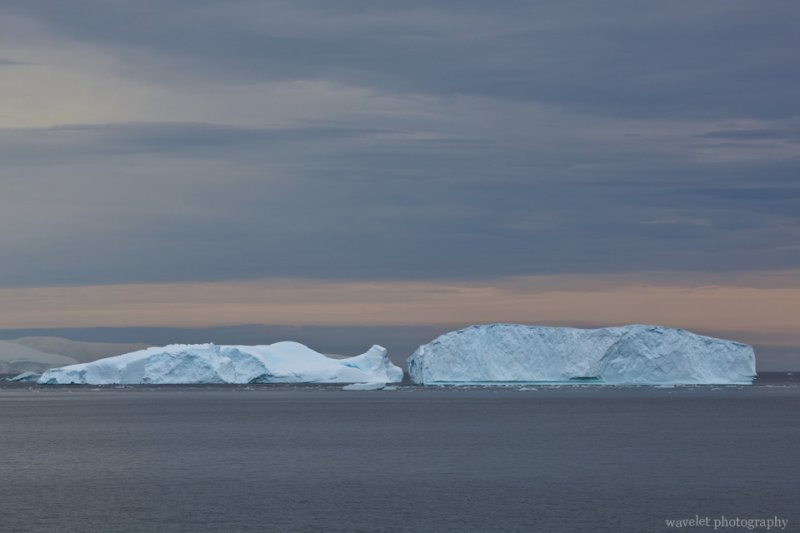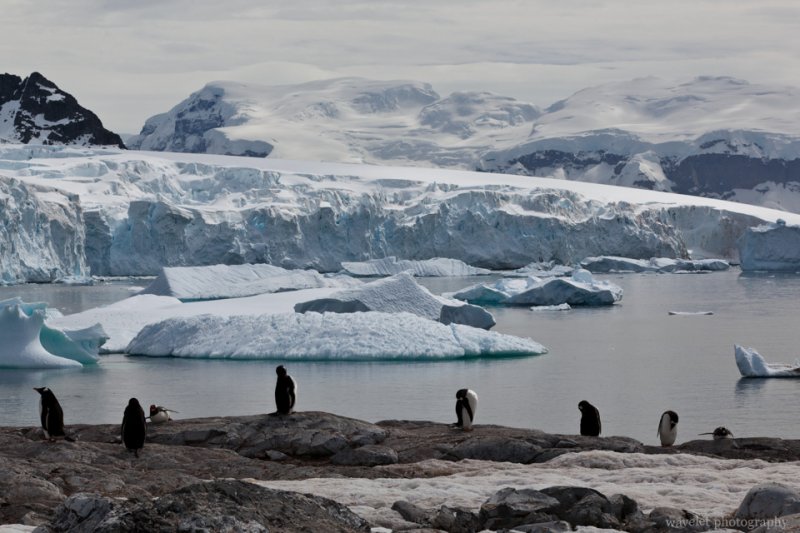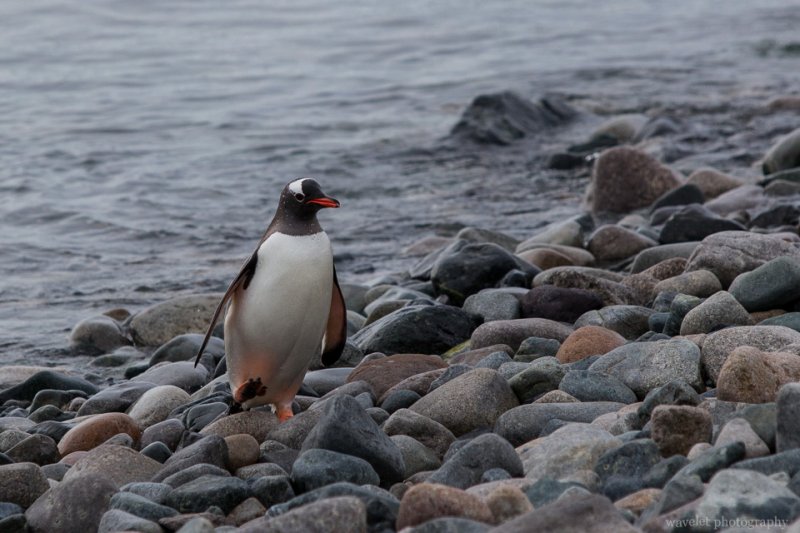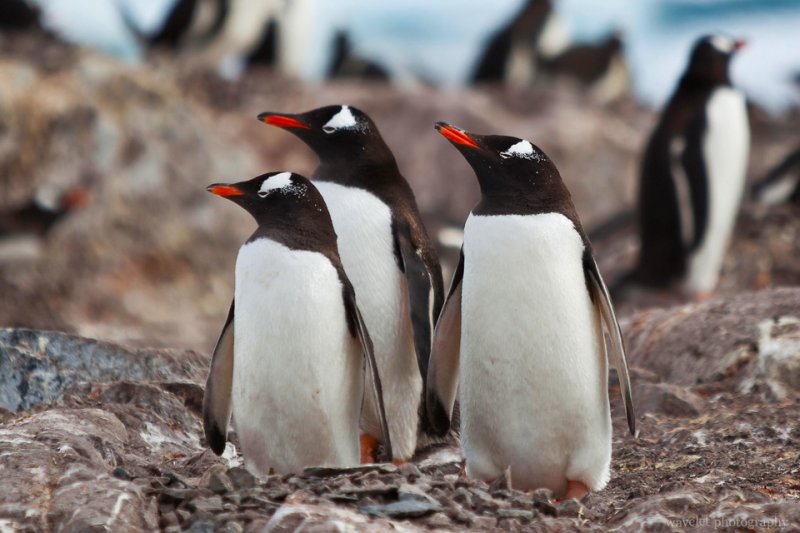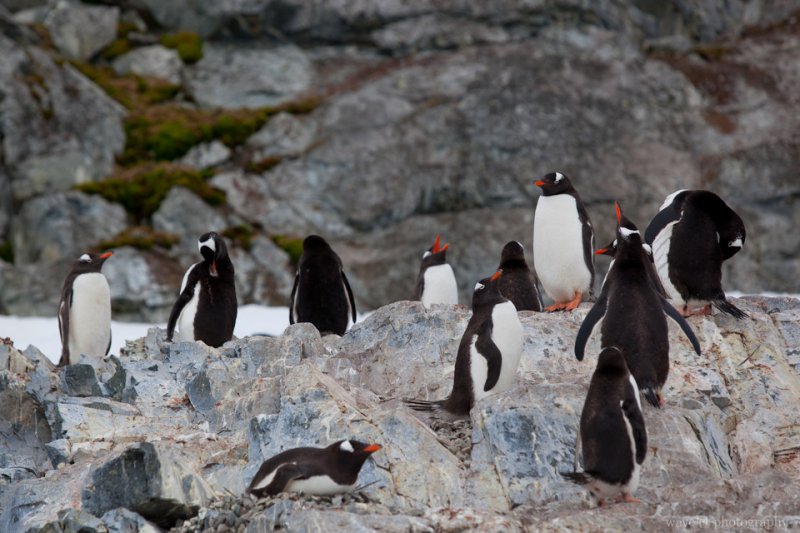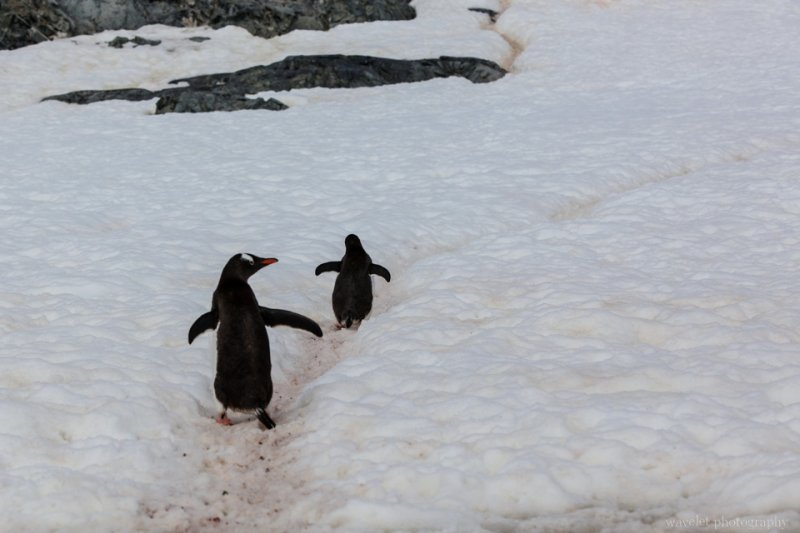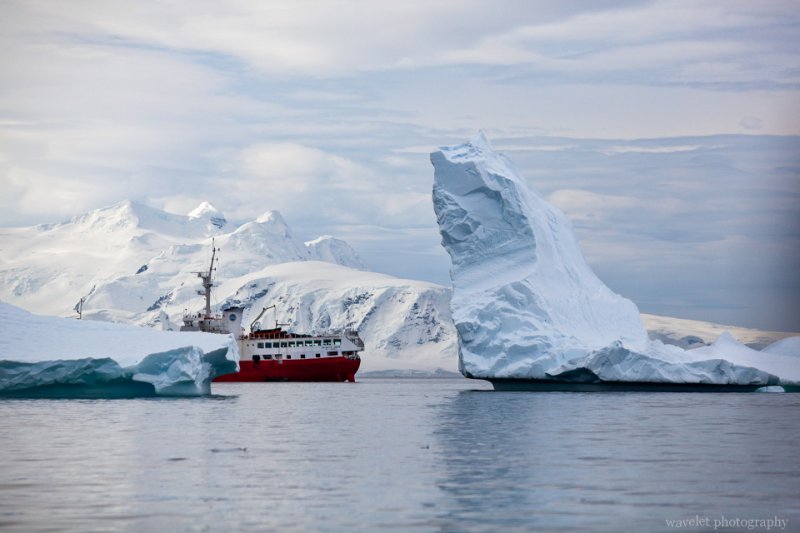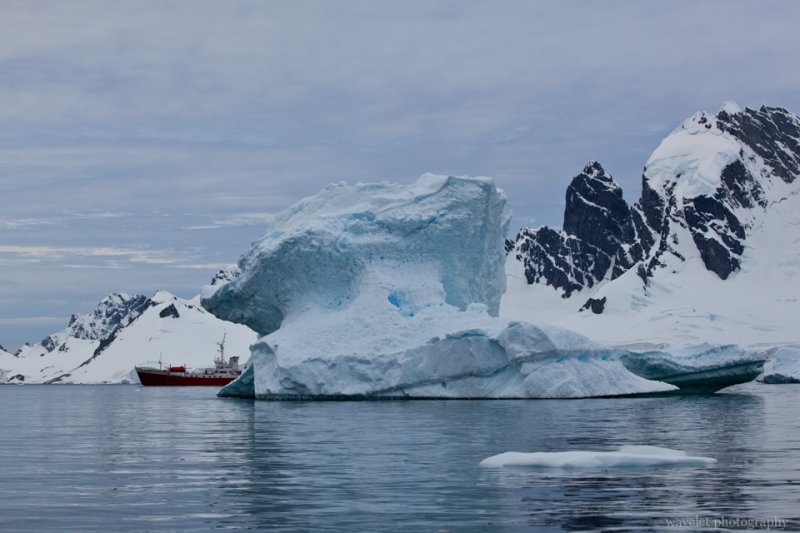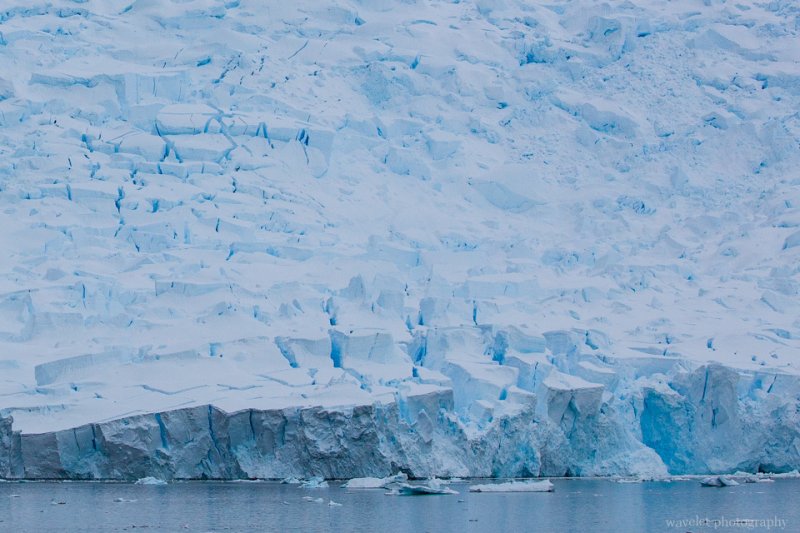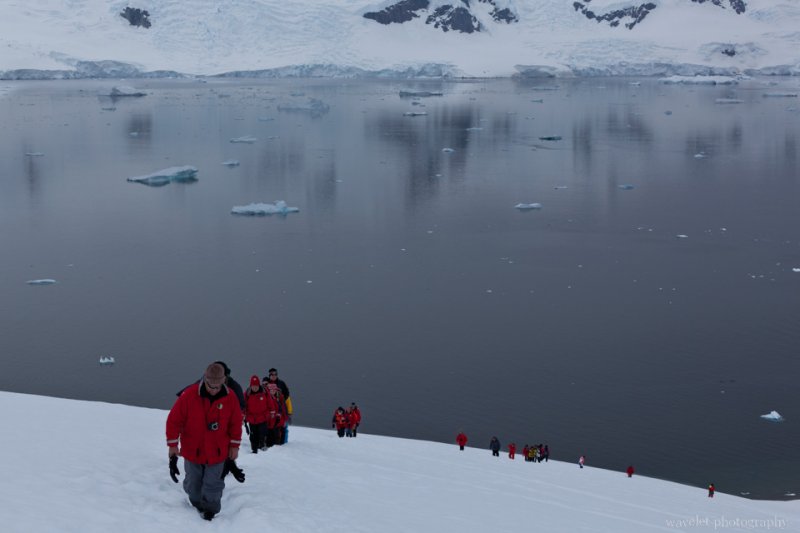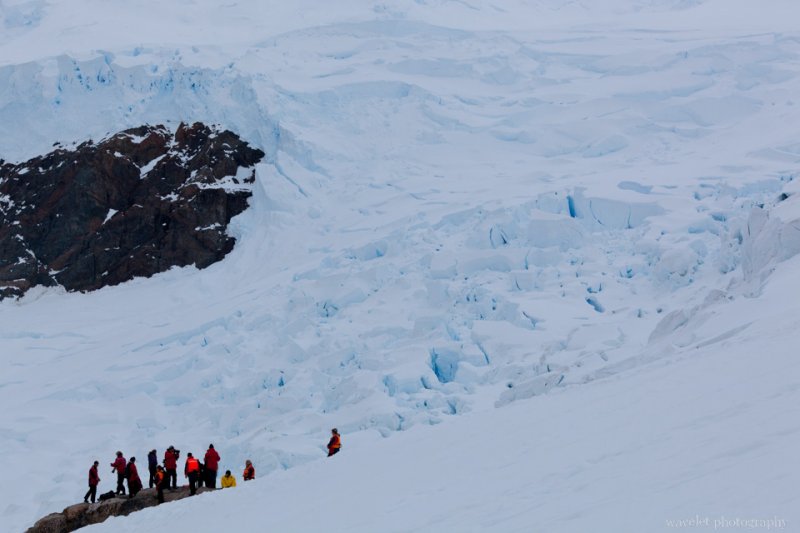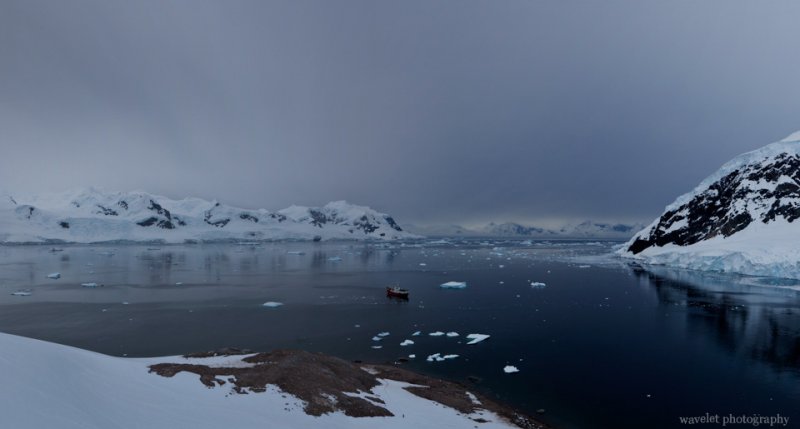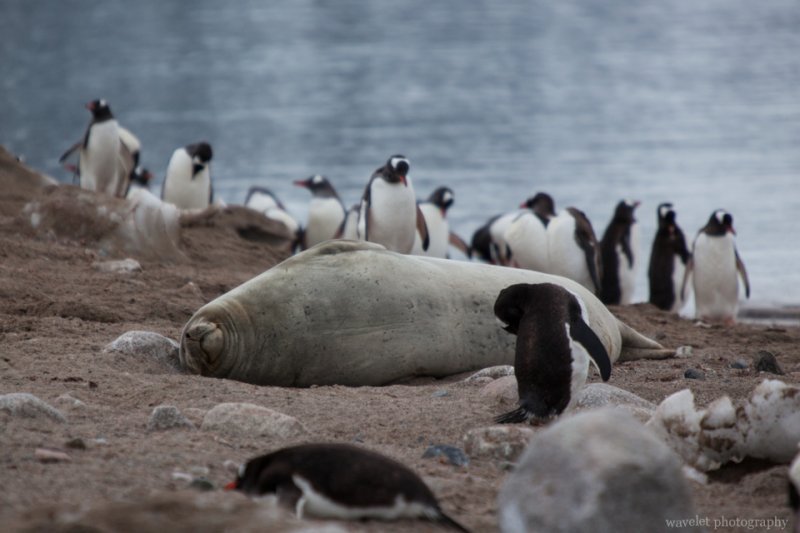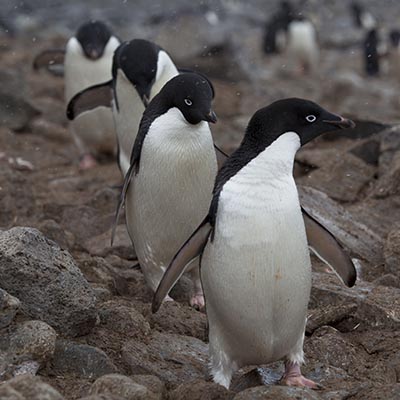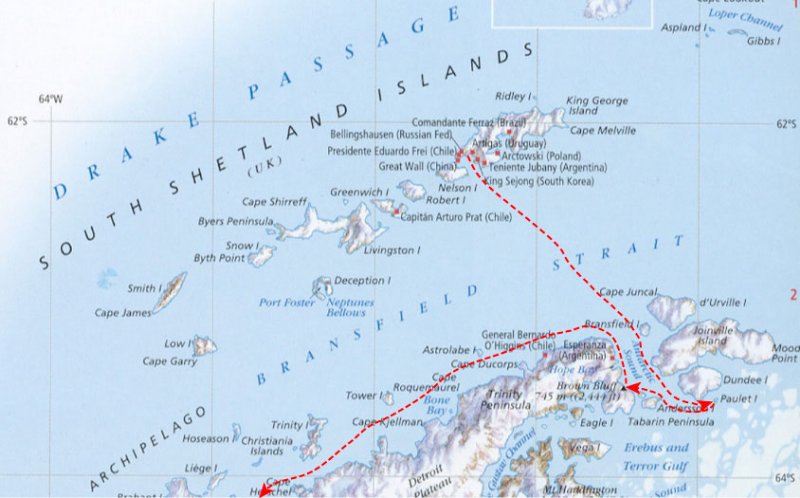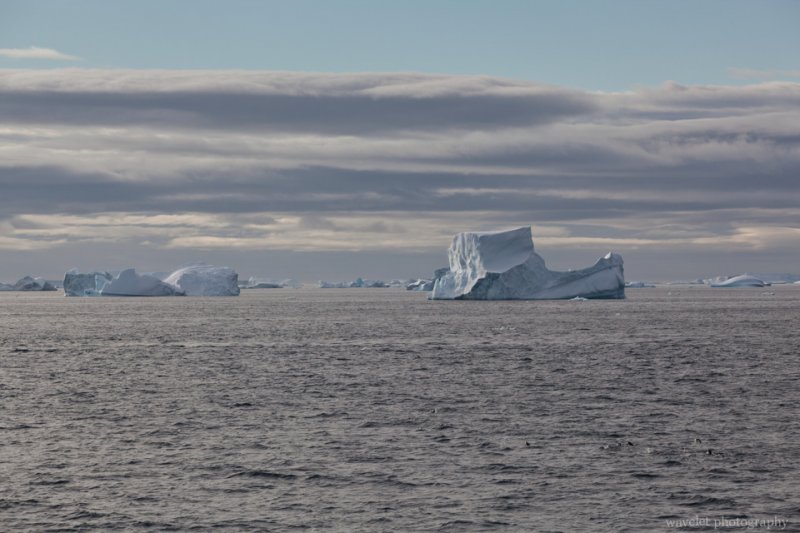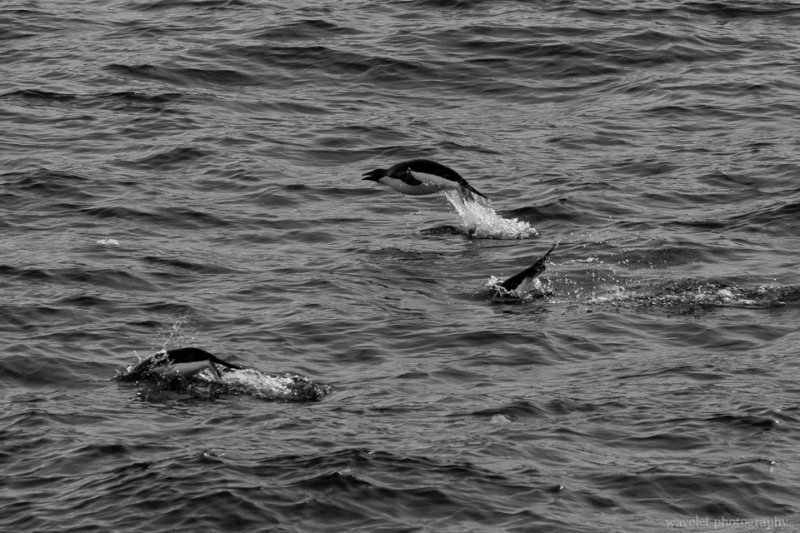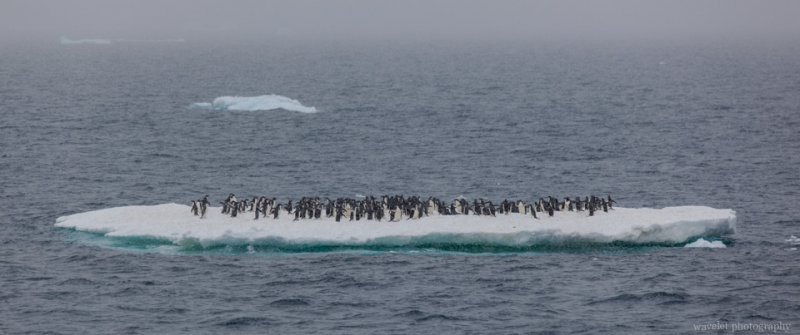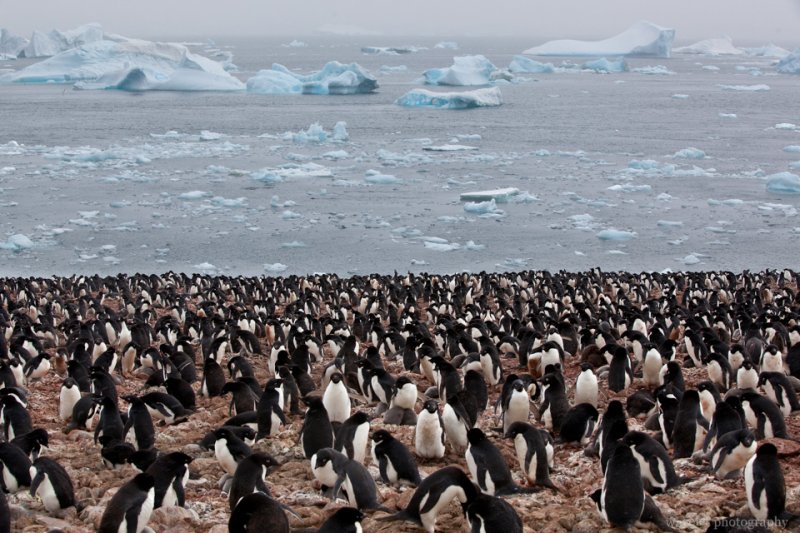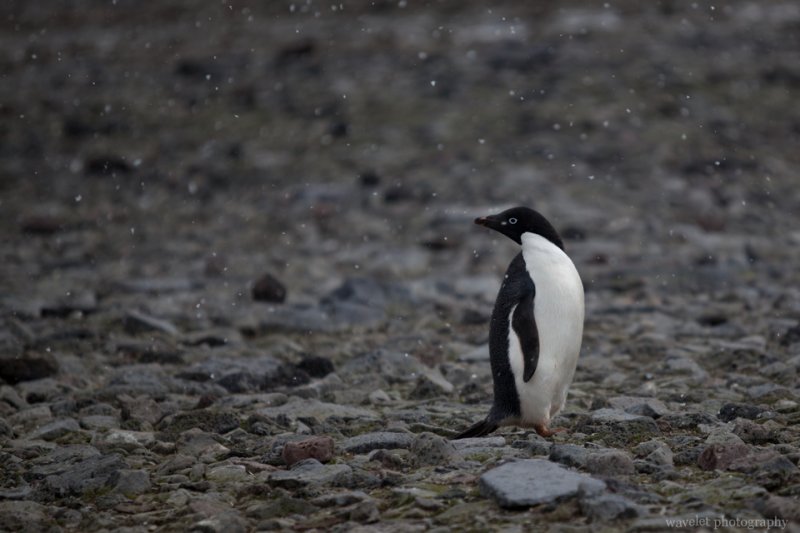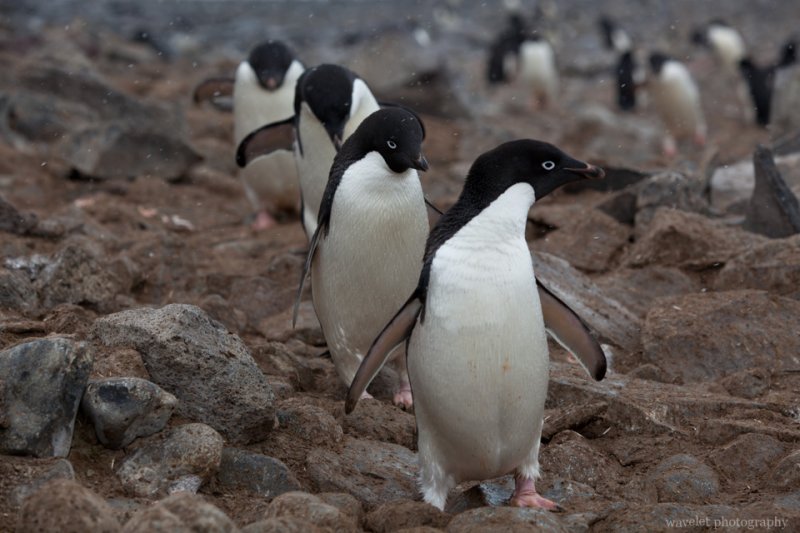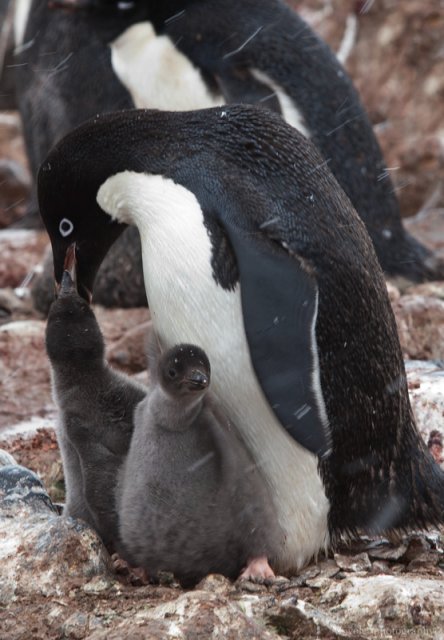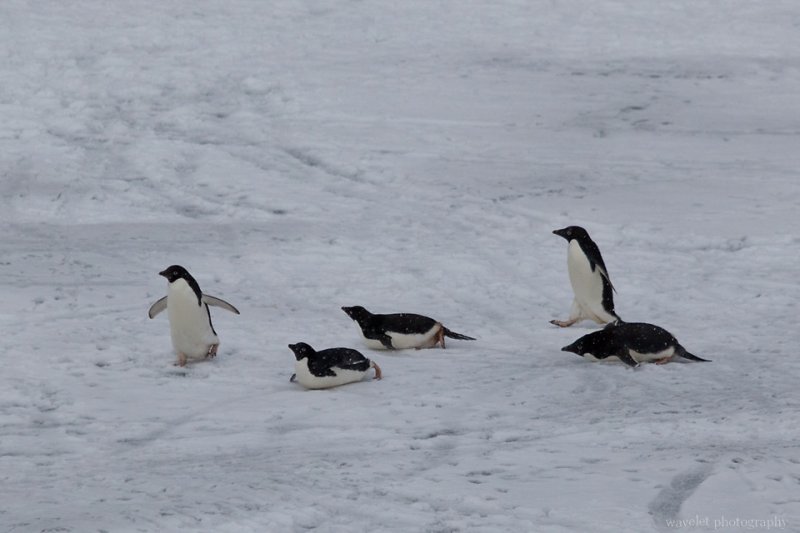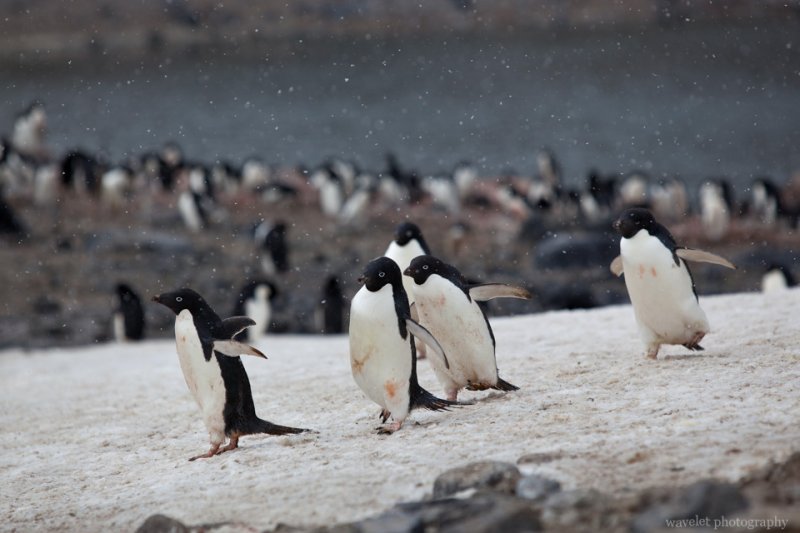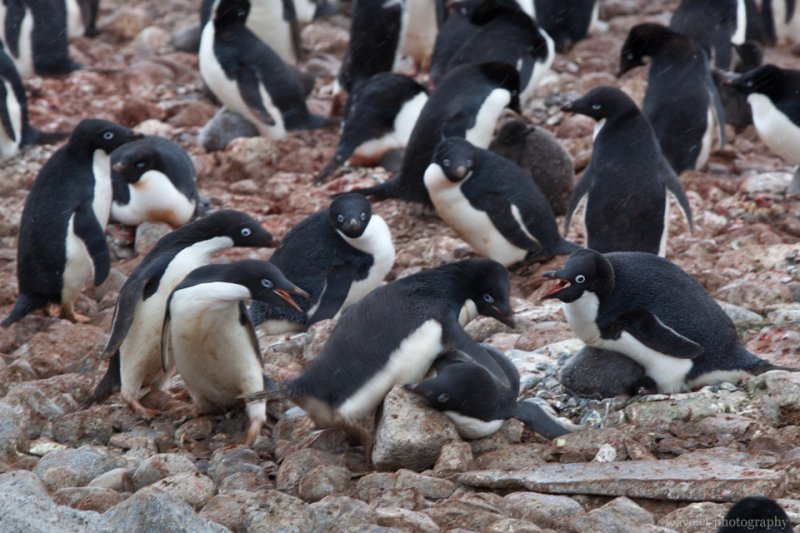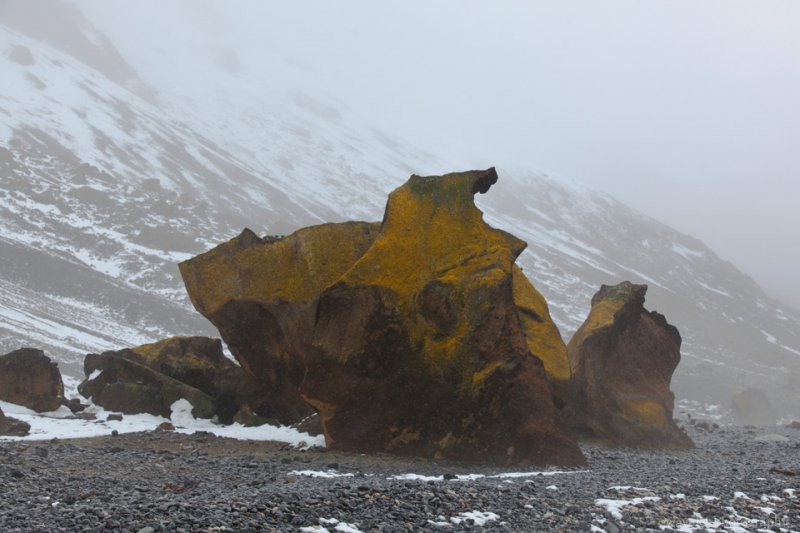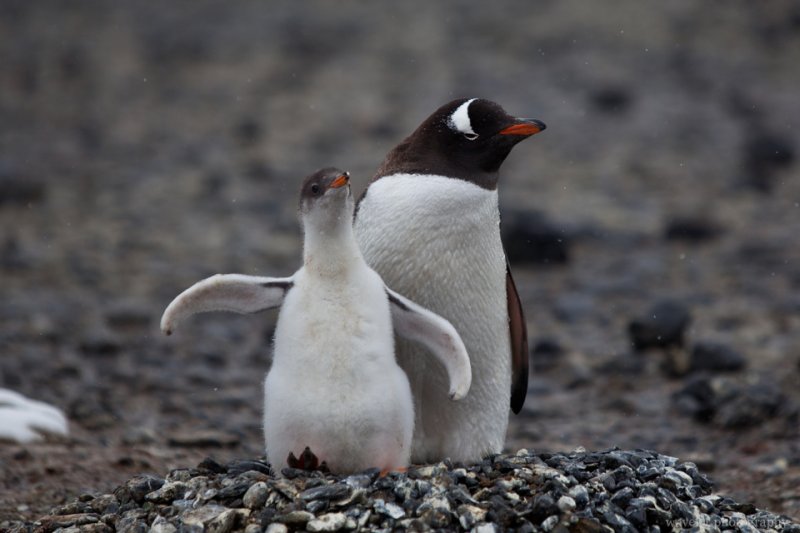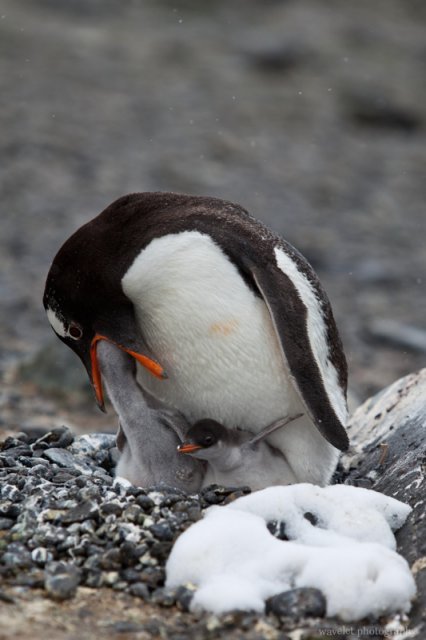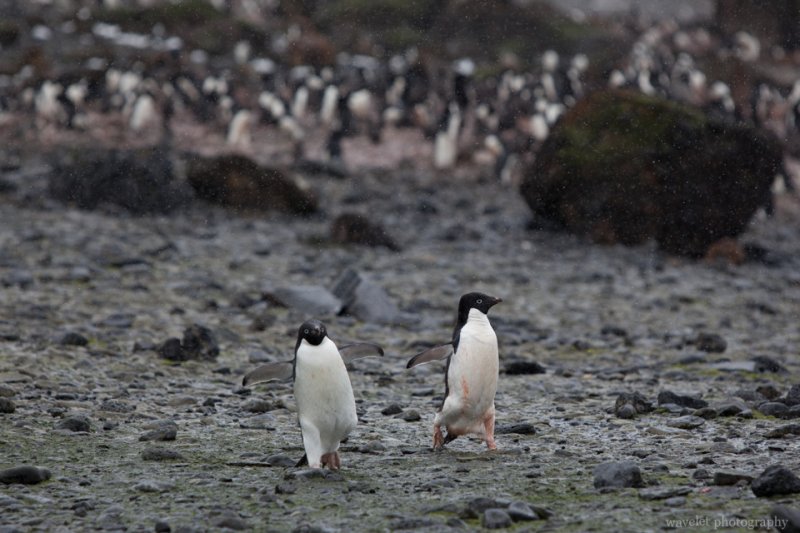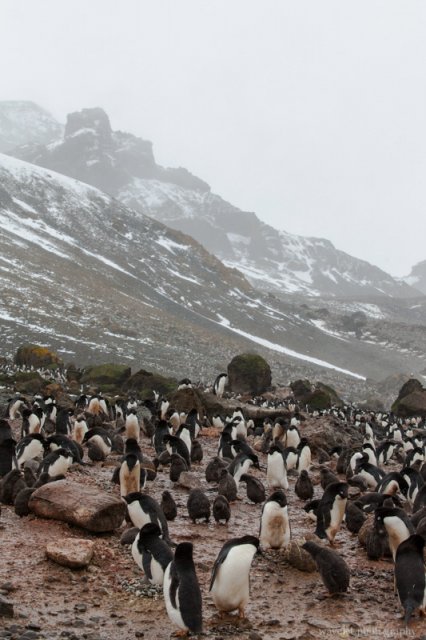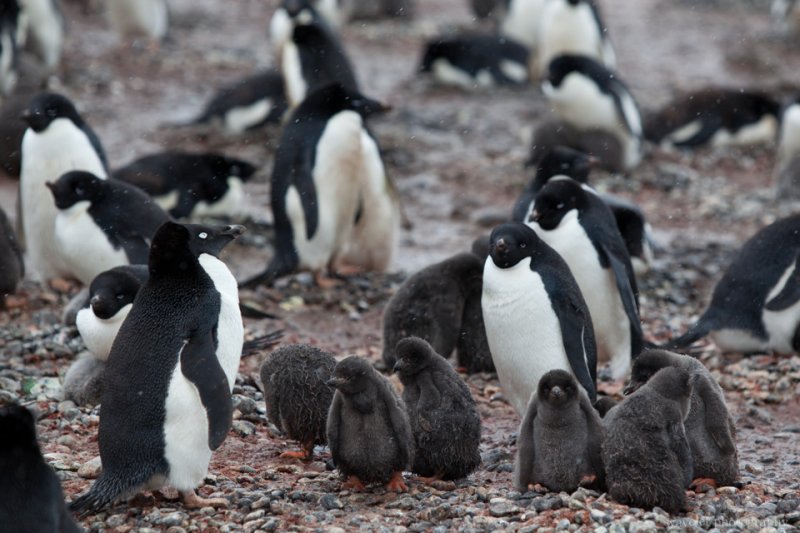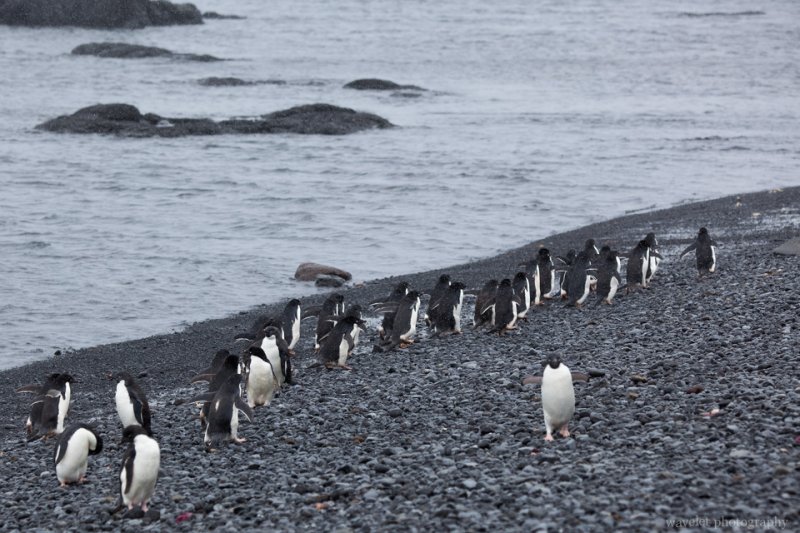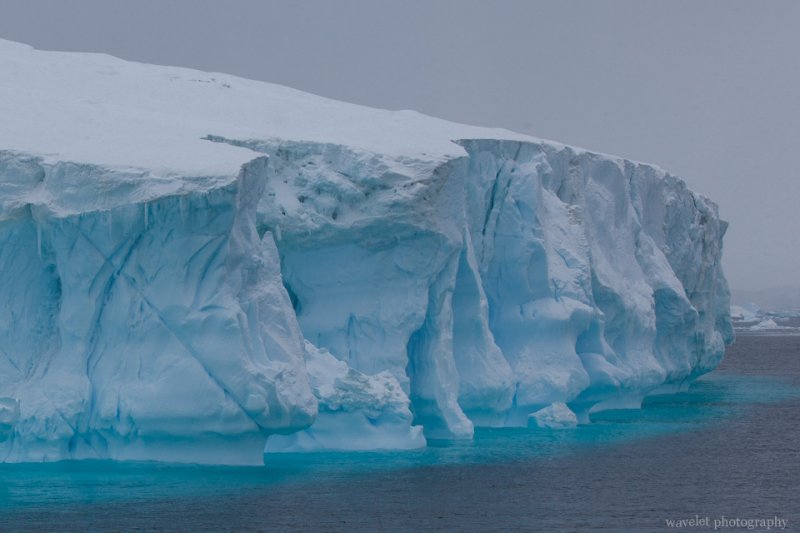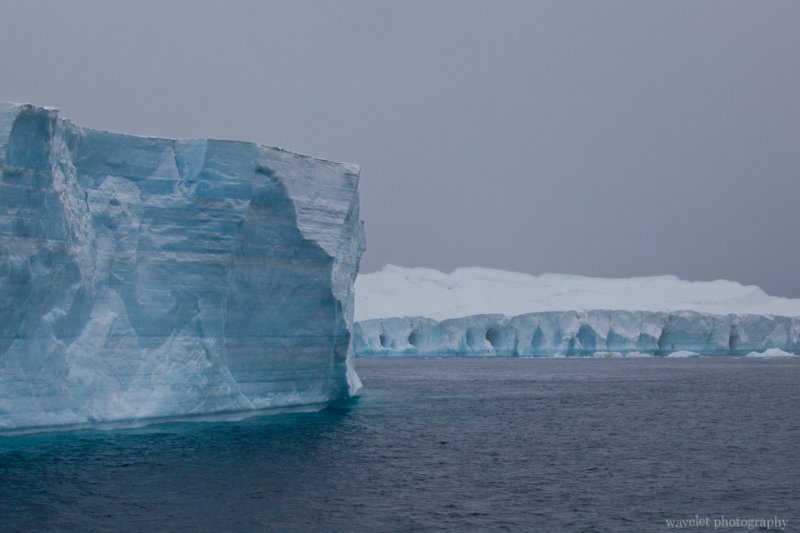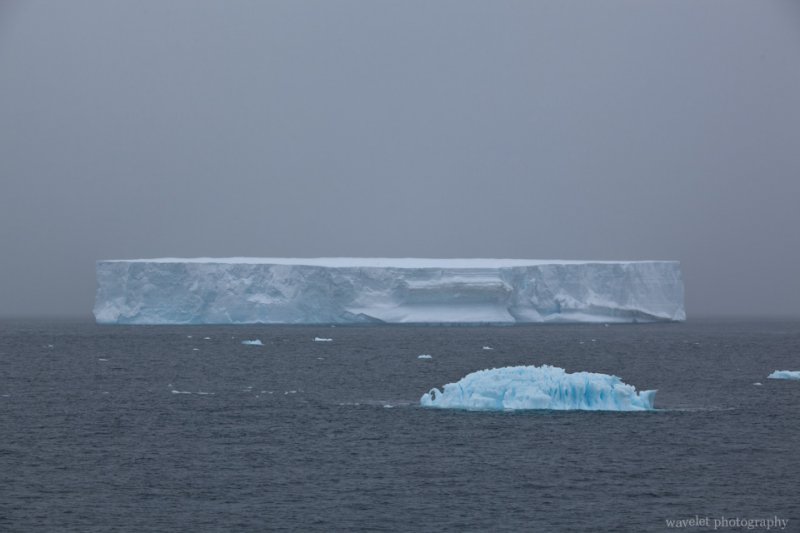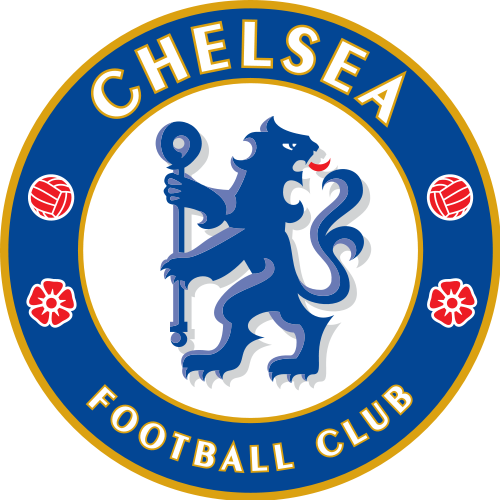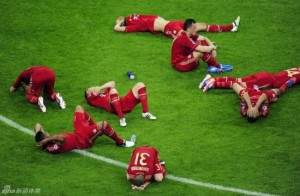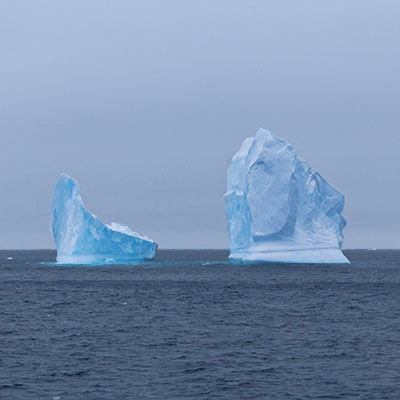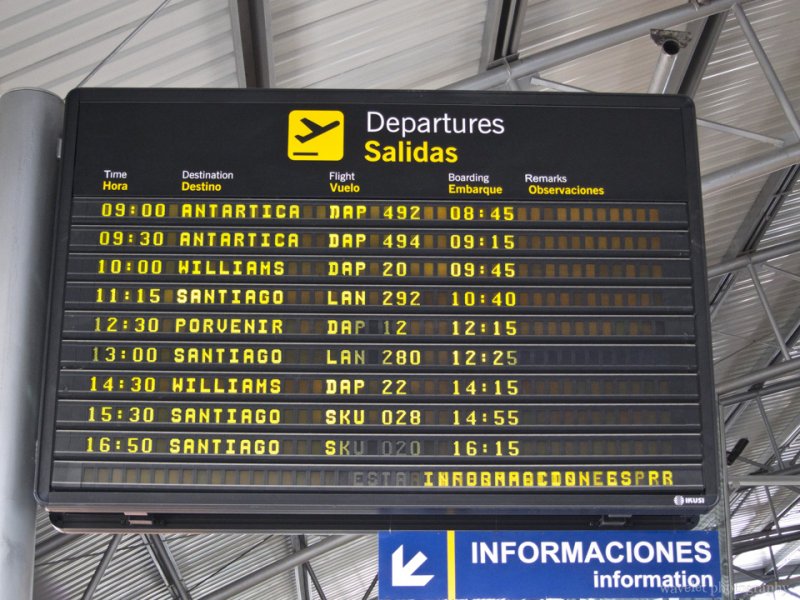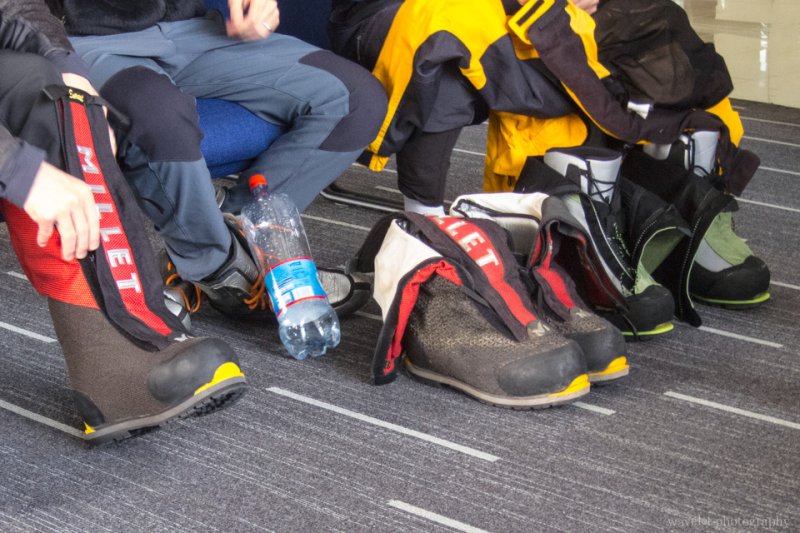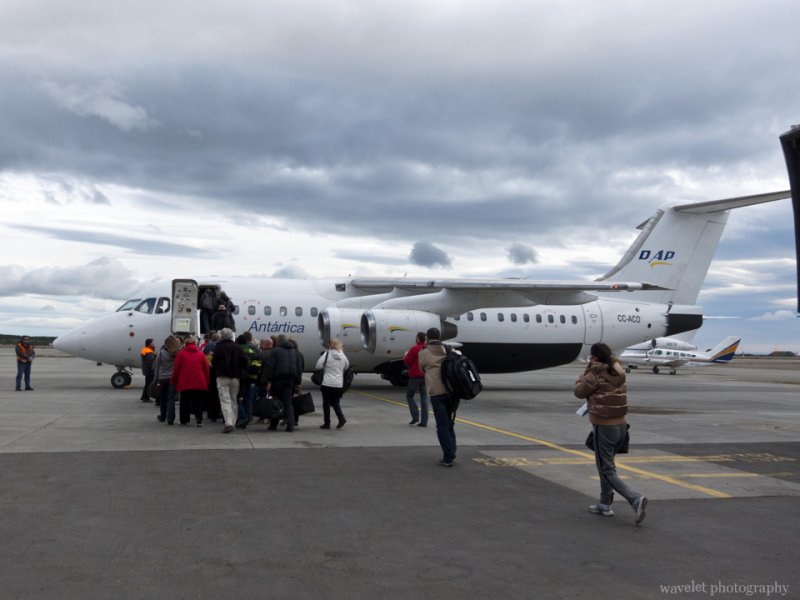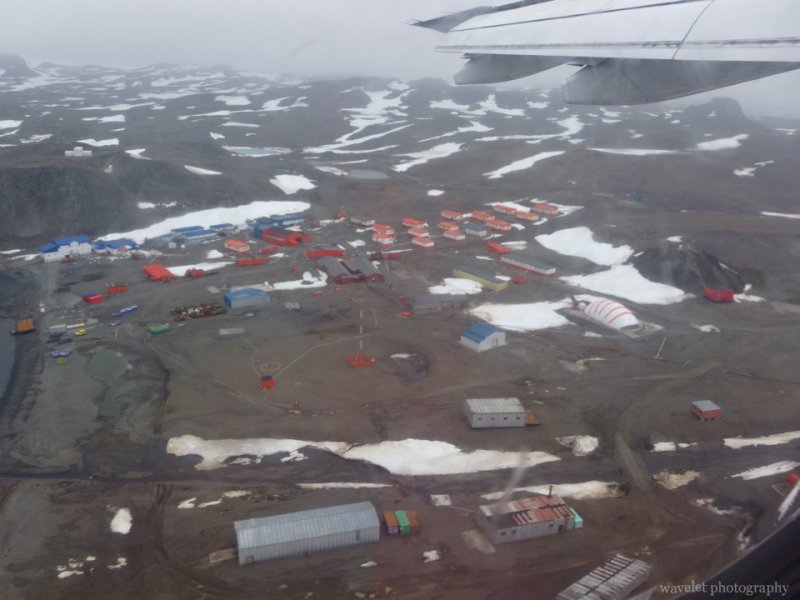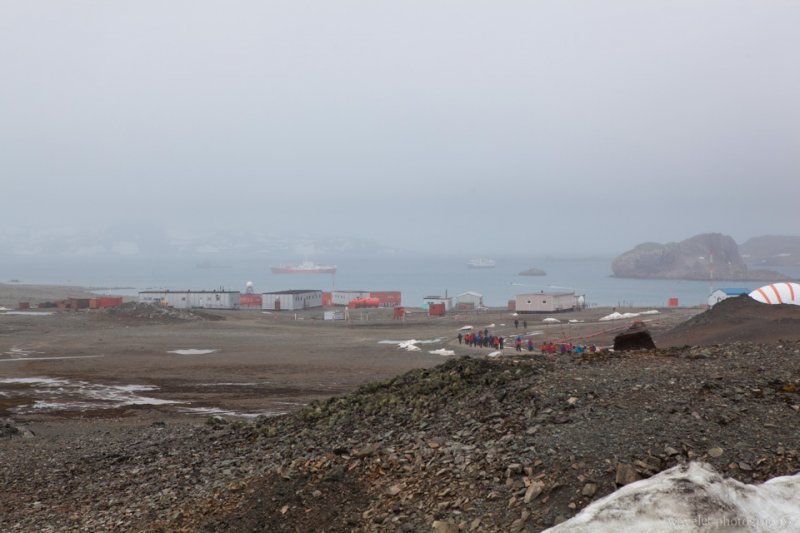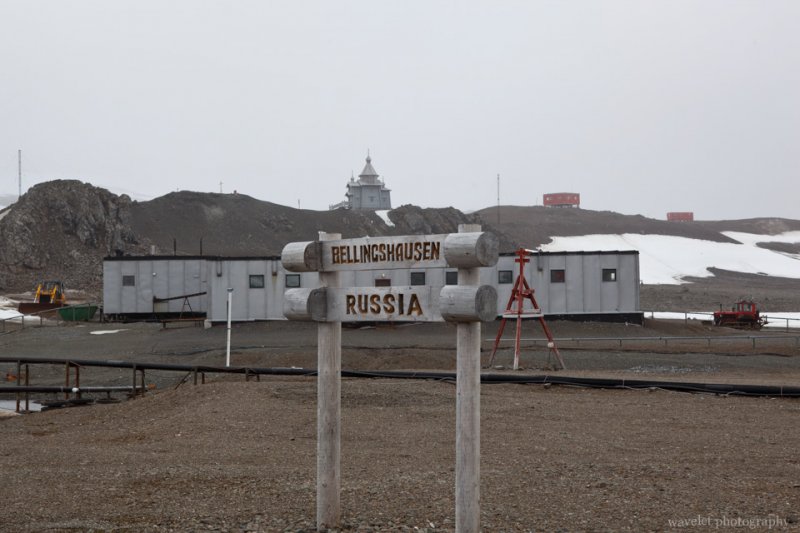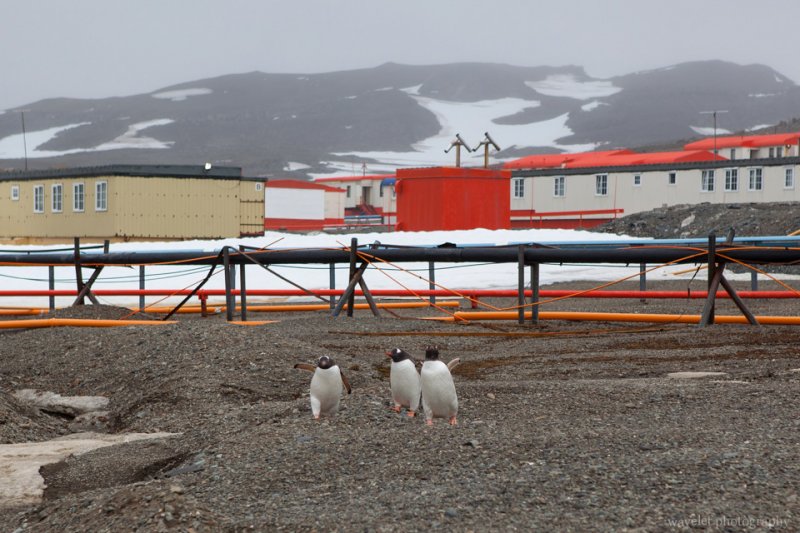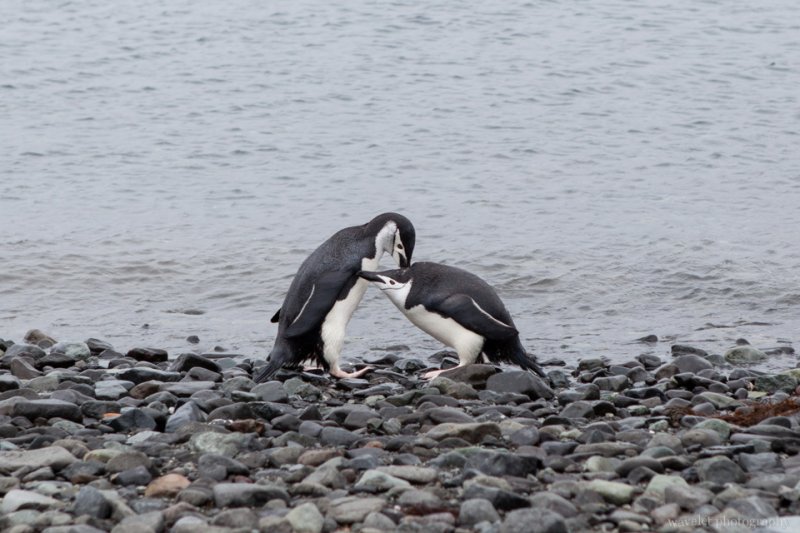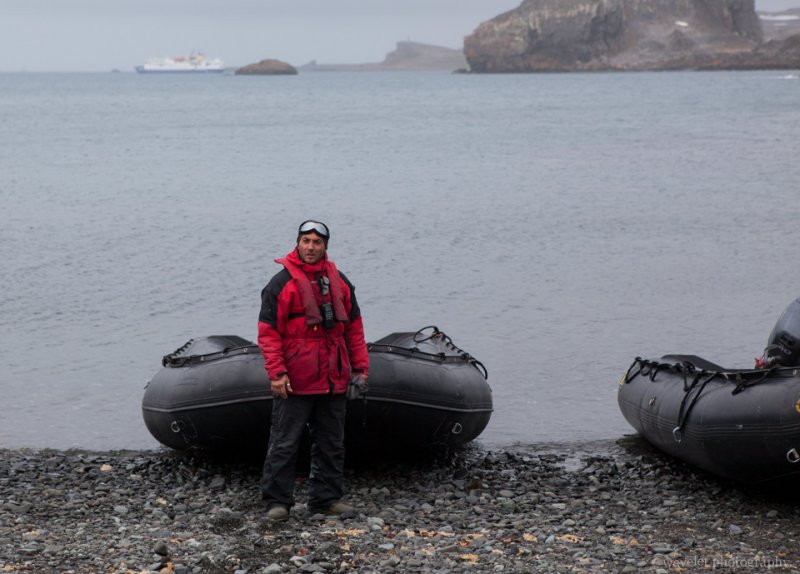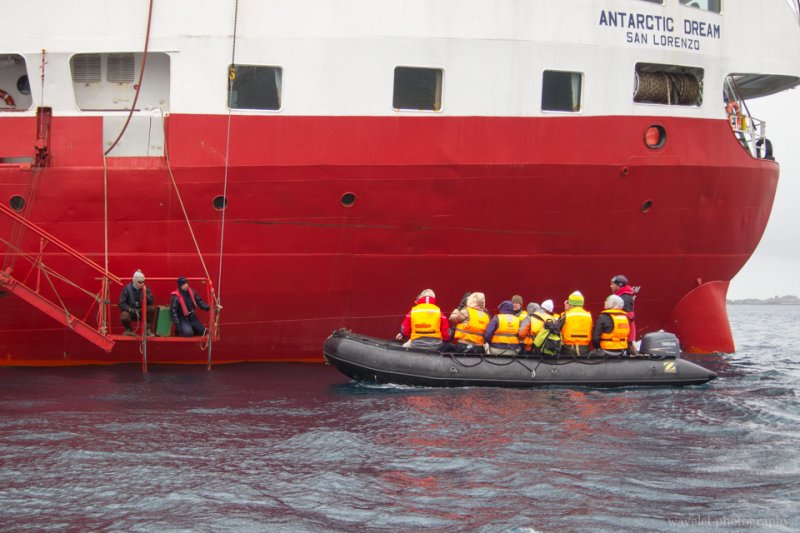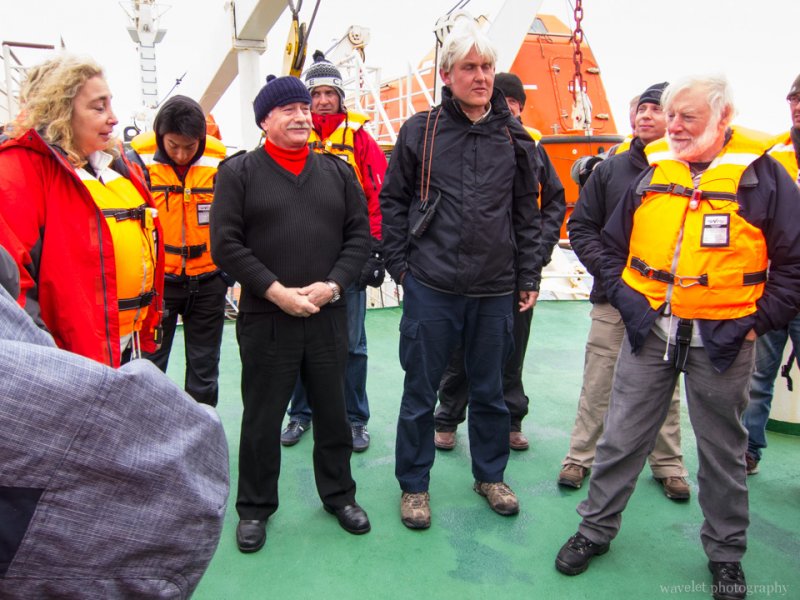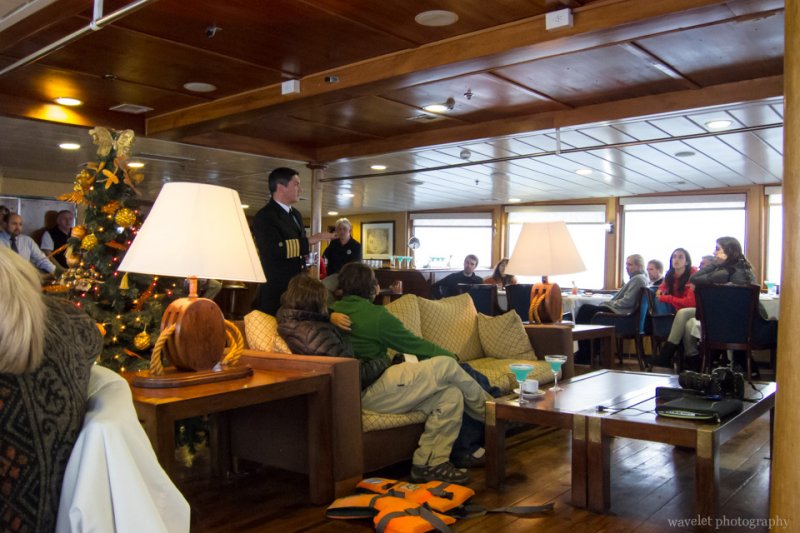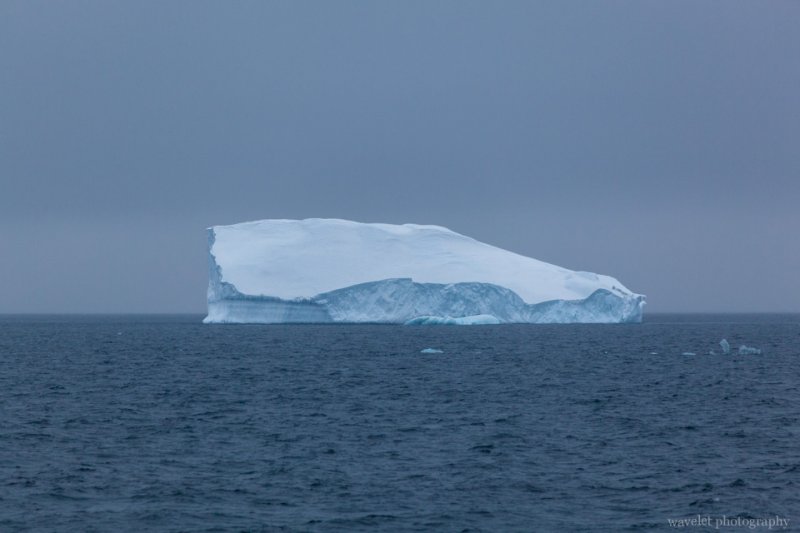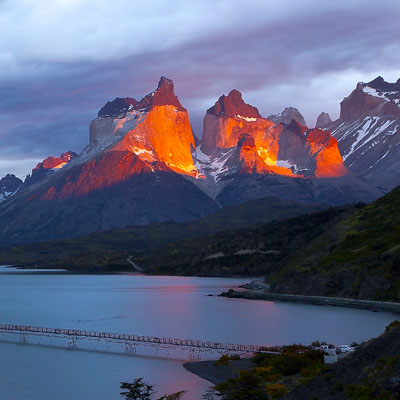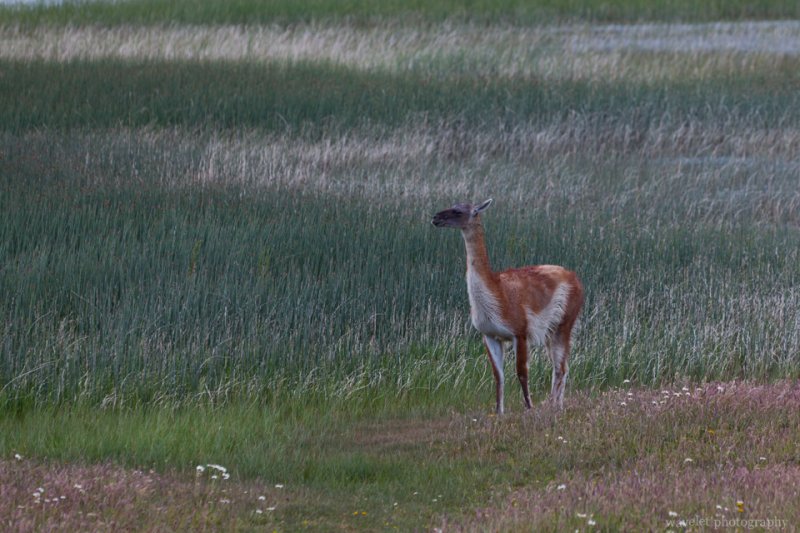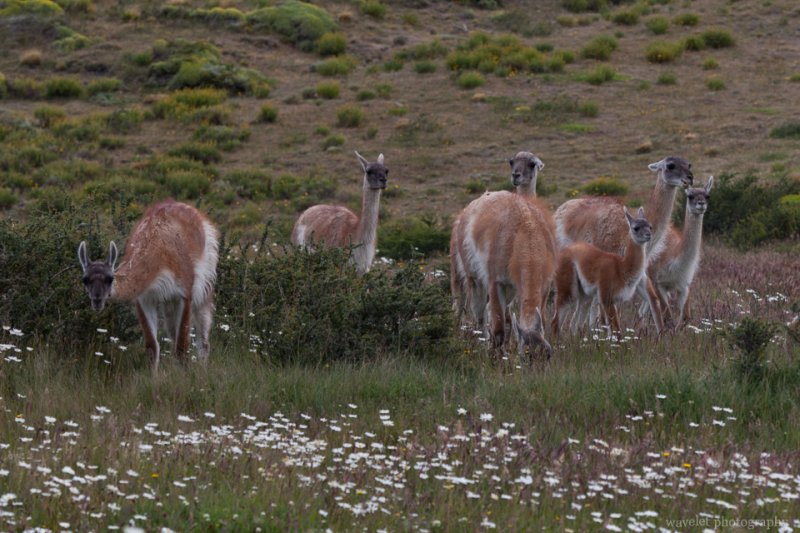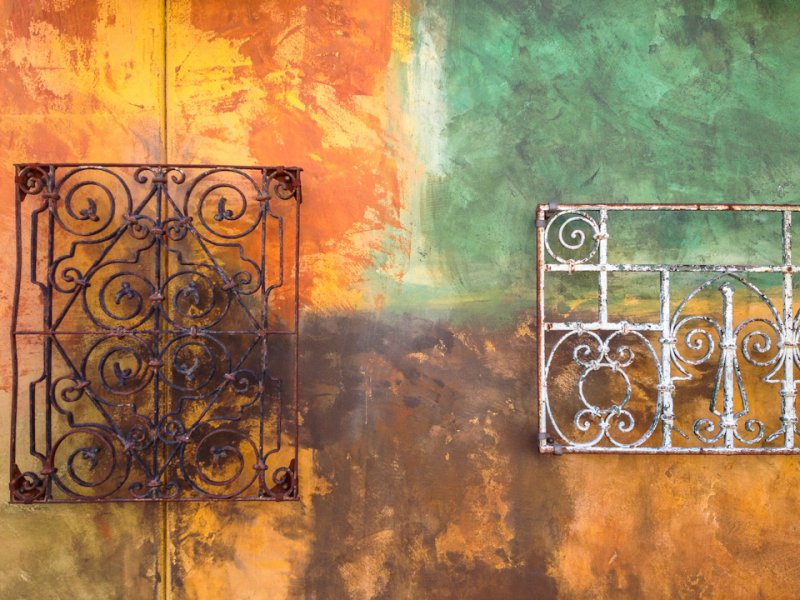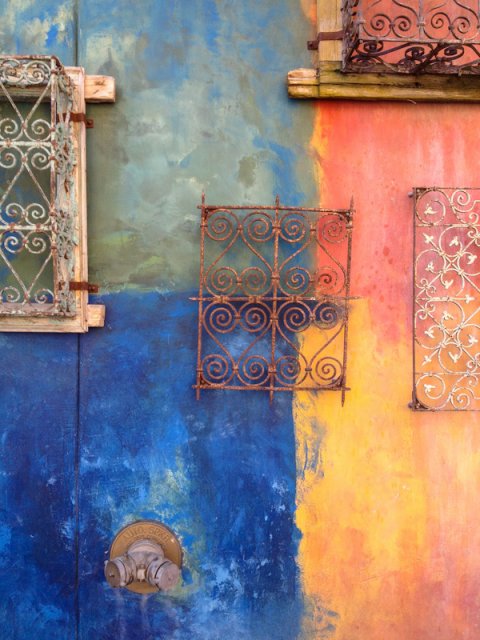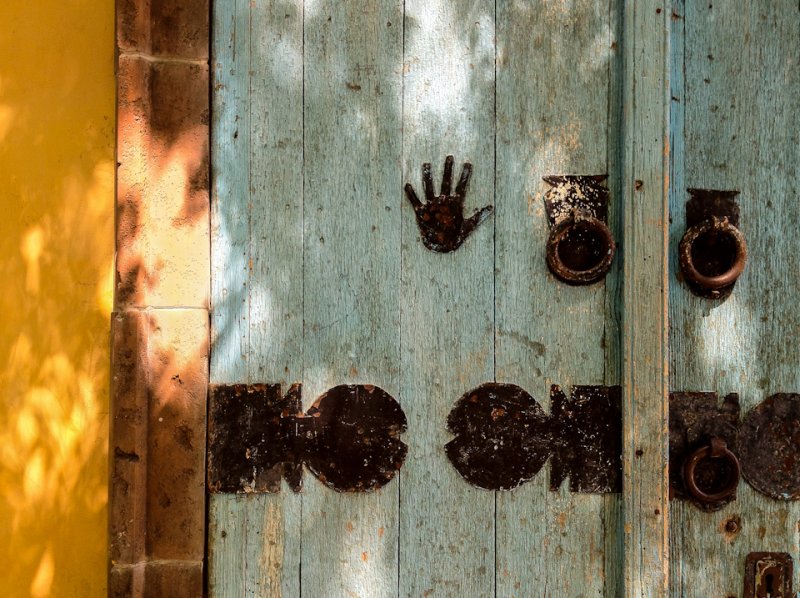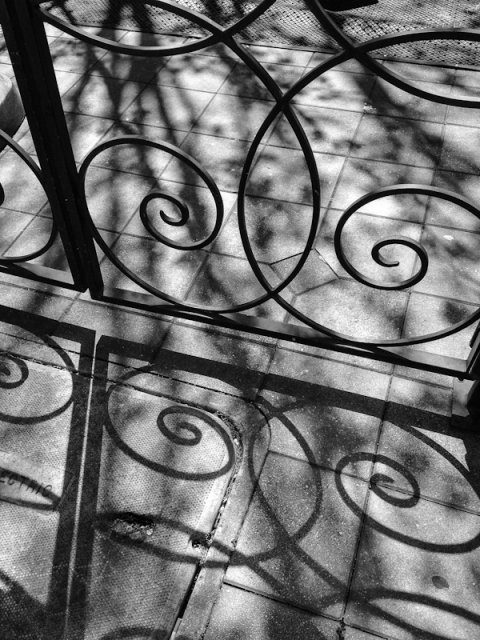2011.12.28Unpaved roads only allow cars to access a small section of Torres del Paine National Park. Separated by lakes and rivers, the majority of the park can only be reached by hiking trails. The famous TDP Circuit is 100 miles long and usually takes 7~10 days to finish. It is often considered as one of the best hiking trails in the world. The shorter and less demanding alternative, the W trail, requires about 4 days. My original plan was to see the Glacier Grey on the day of our arriving and hike a couple of hours on the second day. However, as we wasted our first day with our vehicle, we wanted to cover as much as we could by car on the only day we would spend in the park.
To catch the sunrise, I got up at 5am and went to the vista point that overlooks Lago Pehoé. Unfortunately, thick cloud covered the entire sky. The lake and the mountains were all casted in a cold blue tone. I waited for 20 minutes and the cloud showed no sign to retreat. Distracted by the bushes and thick vegetation, I pointed my camera to the ground. For no reason, I raised my head and I was astonished by what I saw. The cloud opened up a thin line that allowed the sunshine piercing through the leaden sky. The stripe of light projected onto the mountain in a bright red color. Hurry to grab my tripod, I actually pushed it down and my camera hit the ground. I had to clean my lens before I could take any picture. The light lasted less than 5 minutes and I only manged to make two shots. As a photographer, it’s a great pity to be at the right place at the right time but not being totally ready. Nevertheless, it’s the most glorious sunrise that I’ve ever watched. The pictures can never capture the excitement I experienced at the moment.
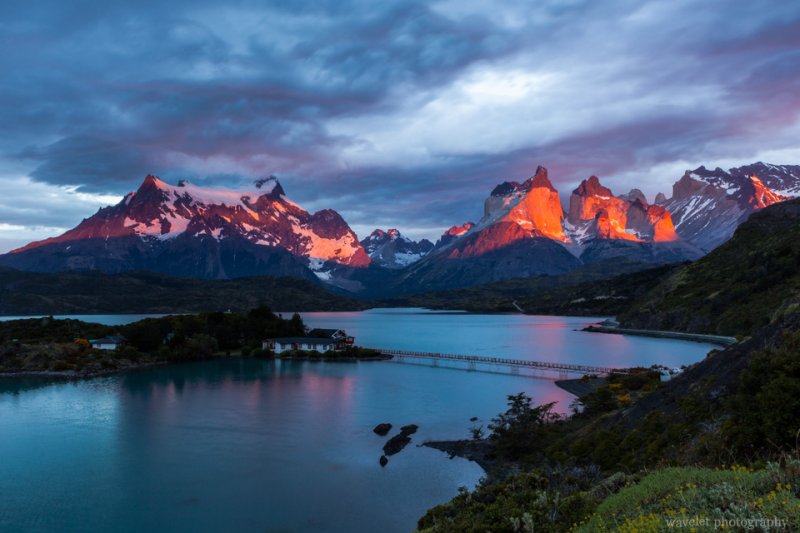
Sunrise over Lago Pehoé. In terms of photography, the setting was not ideal because most of the areas are too dark; but to the one who viewed the color transition at the very moment, it’s glorious!
There is a full facility camping ground 2 miles down the road. It costs only $6 per night. I went there to take several pictures of the lake from a different angel.
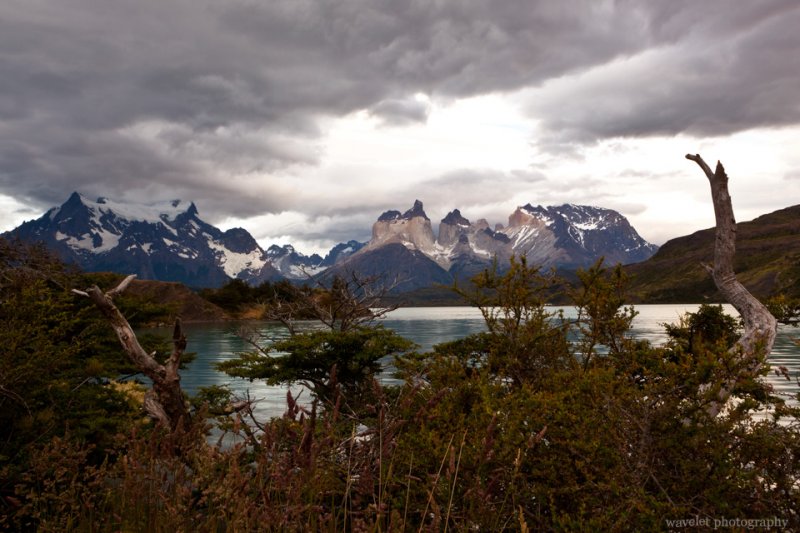
View Lago Pehoé and Cuernos del Paine from camp Pehoé.
I drove back to the hotel and went to bed with the concern that if we would have a clear day. After several hours, when I stepped out of the room again, wind had blow the cloud, as well as my worry, away. Lake Pehoé revealed itself in turquoise color, similar to the glacier lakes in Banff, under the blue sky.
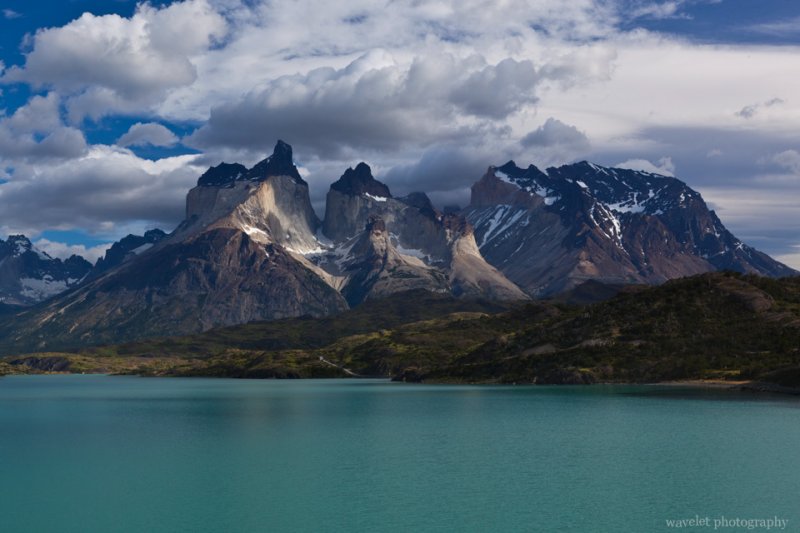
Lago Pehoé in turquoise color.
After the breakfast, we started driving to the north. The first stop is the port of Lago Pehoé. At the time we arrived there, a boat was just about to set off. A lot of hikers were ready to get on board. In the summer, there are 3 shifts of cruise boat (Catamaran) to take hikers crossing Lago Pehoé. It is one of major entry points to start TDP Circuit trek.
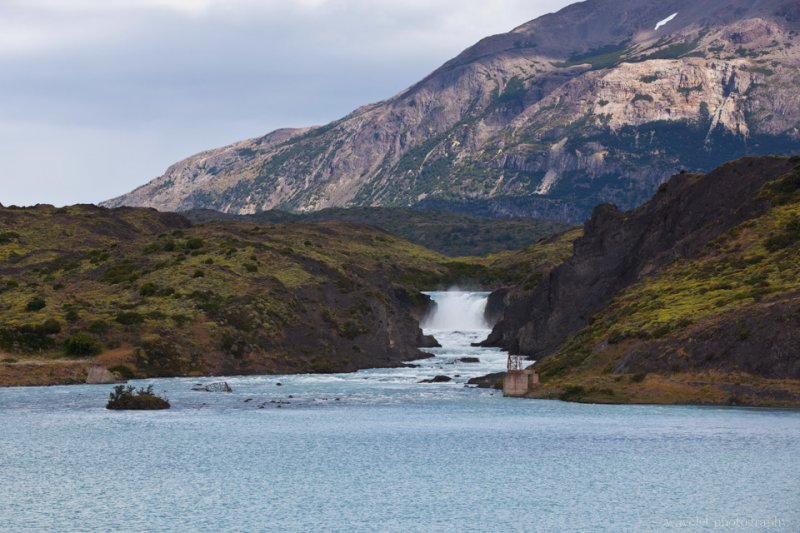
Salto Grande, a waterfall that connects Lago Nordenskjöld and Lago Pehoé.
We parked the car and started walk a trail towards Sendero Mirador Cuernos – a view point that overlooks Cuernos Principal across Lago Nordenskjöld. Cuernos means Horns, which is a vivid description of the shape of TDP’s most famous peak. The trail made a turn to the north, we now had a open view of Cuernos Principal. From here, we could walk to the waterfall, Salto Grande, that we saw earlier. The wind suddenly got much stronger, we could hardly stand still on the open field.
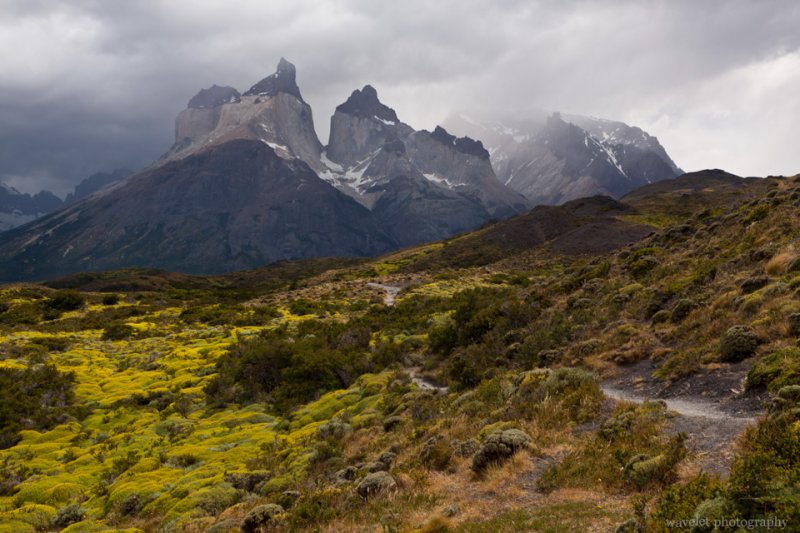
Stormy weather over Cuernos del Paine.
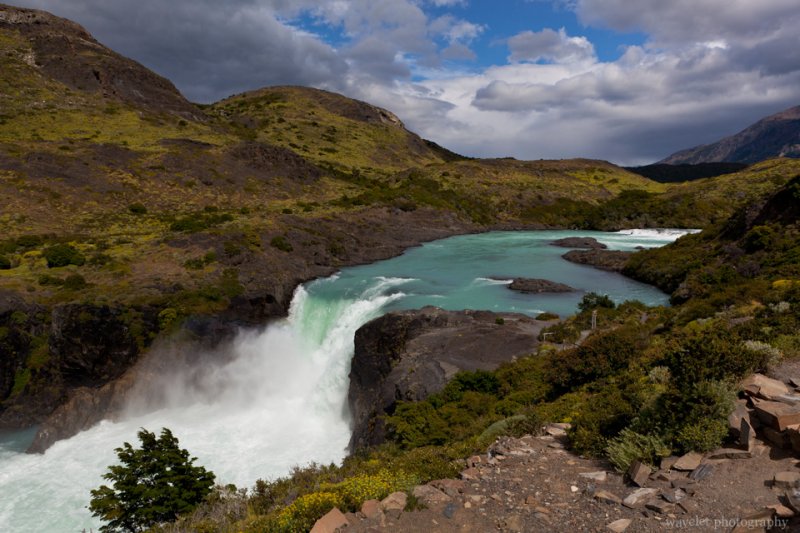
Salto Grande Fall.
We decided to turn back and continued driving to northeast side of the park. At one point, we saw a group of guanacos. They are the close relatives to Llamas and Alpacas we saw in Peru. I knew them from the comic book, The Adventures of Tintin, as they spit on Captain Haddock several times – it is their nature to spit when threatened. Looked very vigilant, they were not afraid of people in close distance. We took many pictures with them.
Cuernos del Paine and Monte Almirante Nieto are the dominant existence of the TDP National Park. They were never out of our sight as we kept driving. Although we planed to reach Hotel Las Torres, which is the starting point of the challenging 9-hour must-do hiking trail to Base Las Torres peak, we actually only drove half way there. The unpaved road were too bumpy and annoyed us a lot. A 4-wheel drive jeep passed us like wind. That’s the car I will rent next time.
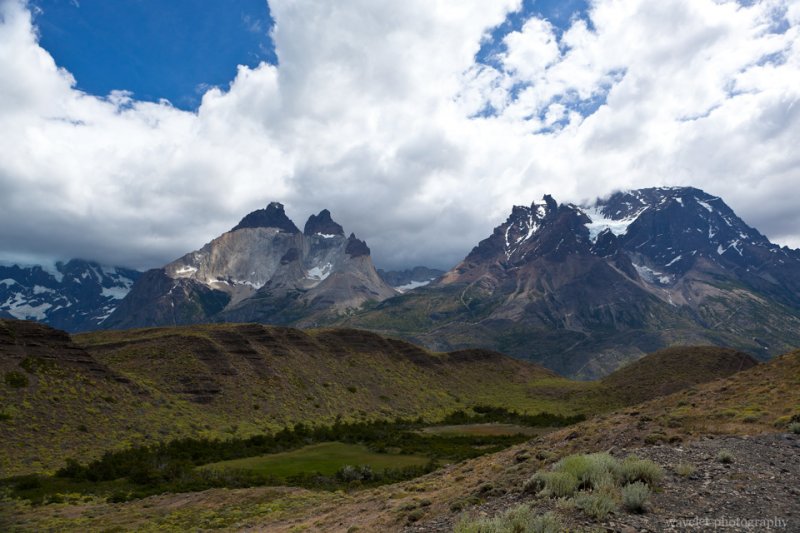
Cuernos del Paine and Monte Almirante Nieto.
We returned the hotel at 2:30pm, had a lunch and took some rest for a hour, then started off to Lago Grey. Again, we didn’t go very far after we reached the park’s administration where we found the polices the earlier day. The road was too bumpy, the wind was strong and we also worried about if our gas was enough to return Puerto Natales. On our way back, we made a stop at Hotel Salto Chico. This is a hotel at the price of $7000 for 4 nights, even more expensive than Sanctuary Lodge at Machu Picchu. It was hot and dry half an hour ago, but now it started raining. We walked around the hotel to see another waterfall, Salto Chico, that the hotel is named after. The wooden plank road took us to the view point behind the hotel, but with the gusty wind blowing the freezing rain against us, I felt the platform was not very safe, not as nice as the open-air jacuzzi that some residents were enjoying.
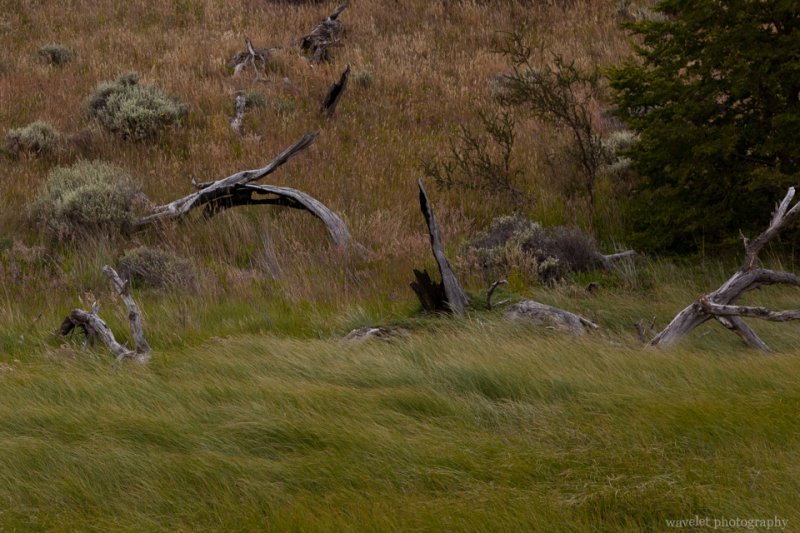
The meadow field under the strong wind around Hotel Salto Chico.
Patagonia’s weather is capricious to say the least, 10 minutes later and several miles away, when we returned to our hotel, the rain stopped and the sky was getting clear again. It’s 6:30pm now. We decided not to go anywhere but rest at the hotel. Although we were not able to do many things we originally planned, after all this was only an overture of a grander journey.
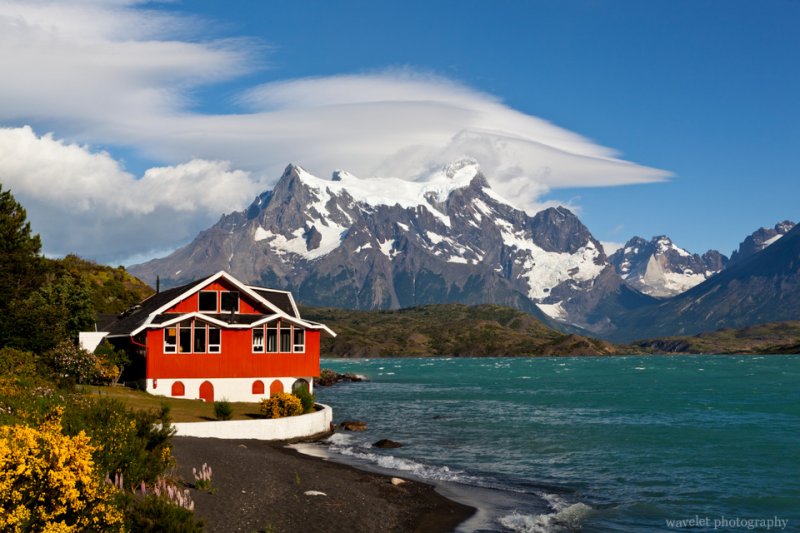
Hosteria Pehoé.
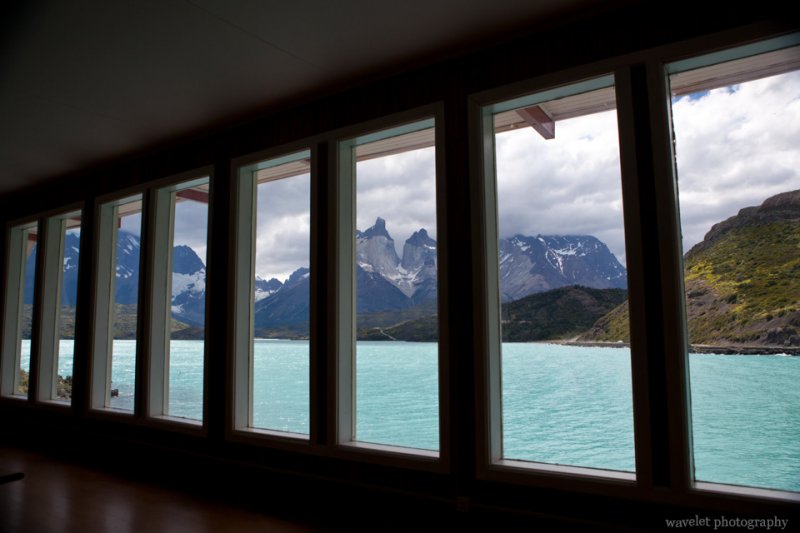
Overlook Lago Pehoé and Cuernos del Paine from Hosteria Pehoé.
We checked out of hotel at 9am the next day. When we reached Puerto Natales, the gas tank was still half full. The returning trip was uneventful except a couple of herds of cows and sheep we encountered, for the rest of the time, the strong west wind was our only companion.
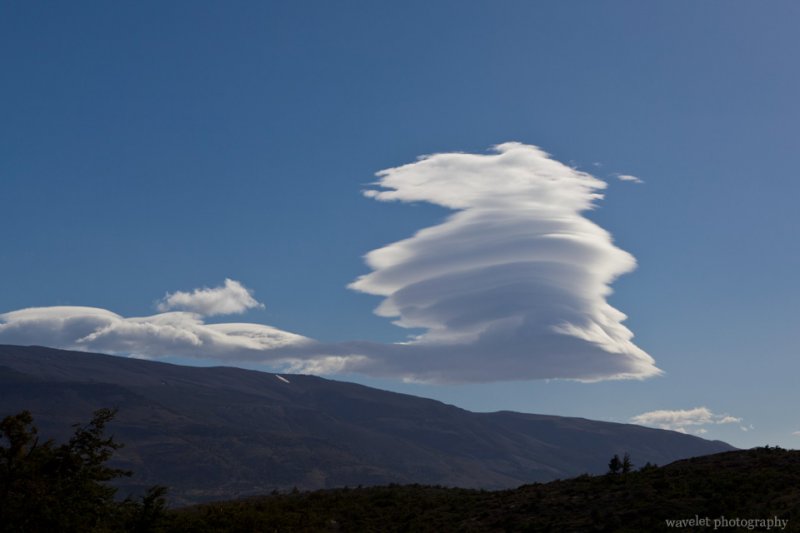
Cloud in strange shape in TDP national park.
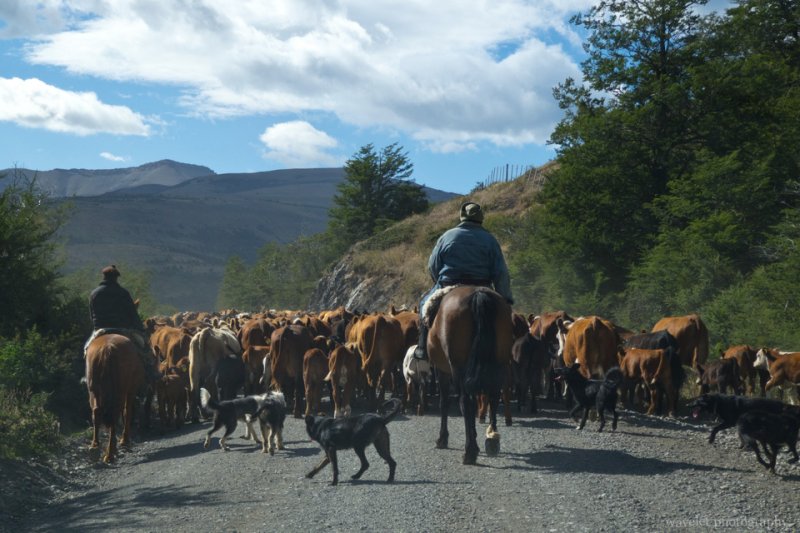
Cattle head blocked the road.
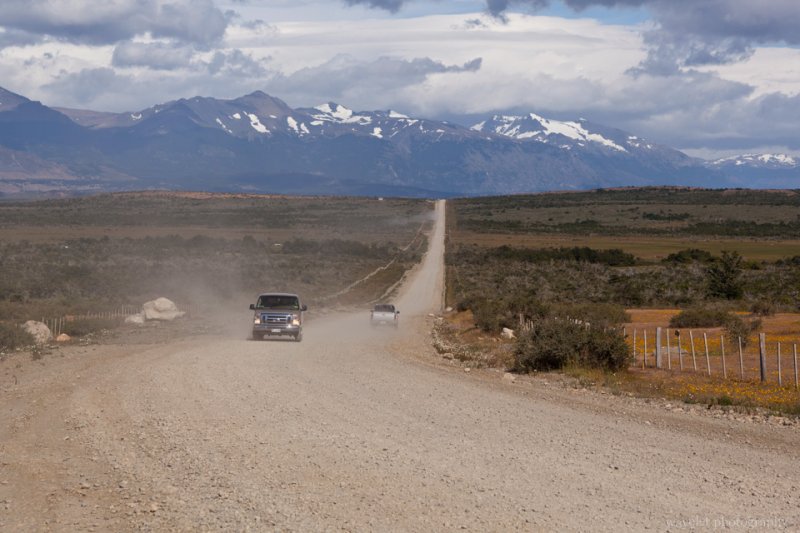
80 miles of bumpy, and painful, dirt road from Puerto Natales to TDP.
It’s 2pm when we saw the Strait of Magellan again. The wind was continuously blustering and has become more and more violent. Although fierce wind is very common in the westerlies region, even local people admitted that this was unusual in the summer. It was said the wind speed reached 50 mph (level 9). We got in touch with the tour organizers of Antarctic Dream. They told us that most likely the next day’s flight wouldn’t be affected because “they have done that before”, but that didn’t really ease our worries.
A couple of hours later, mother nature revealed her power again – magically, the wind stopped completely. We walked to the restaurant La Marmita to have the dinner. This is Punta Arenas‘ No. 1 restaurant recommended by TripAdvior users. The decors and settings were nice, but the taste was at the plain side. Looking thought the window, the smallest branches of the tree didn’t move at all. We saw it as a bless to our journey the next day.
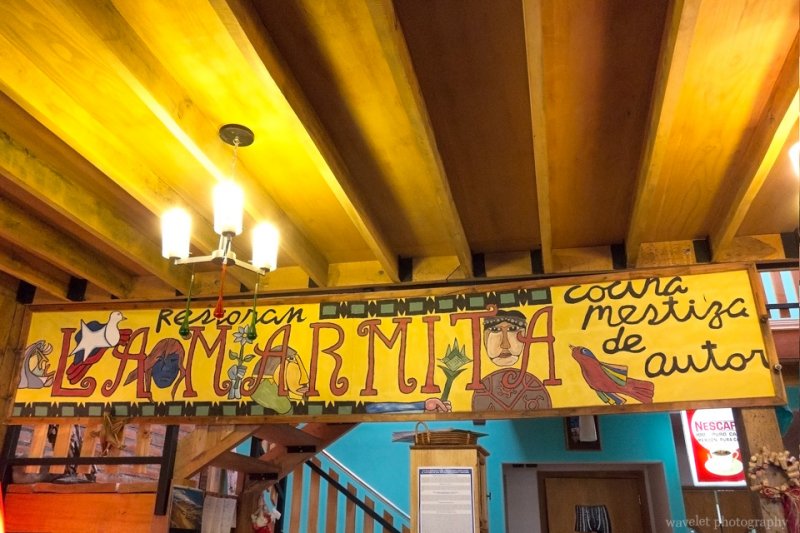
Restaurant La Marmita.
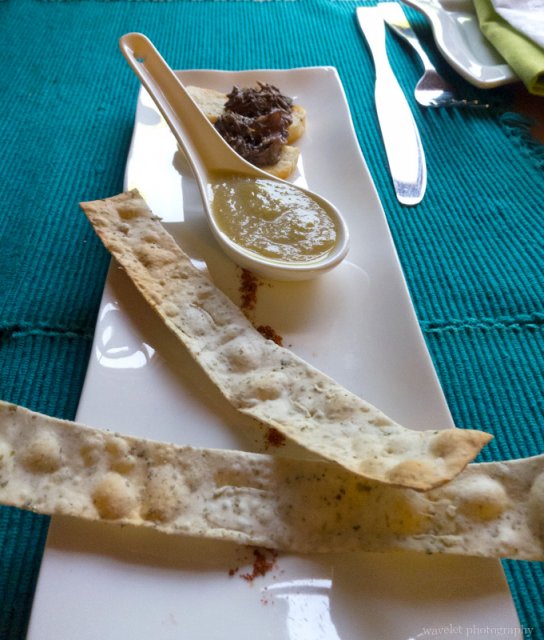
Restaurant La Marmita.
